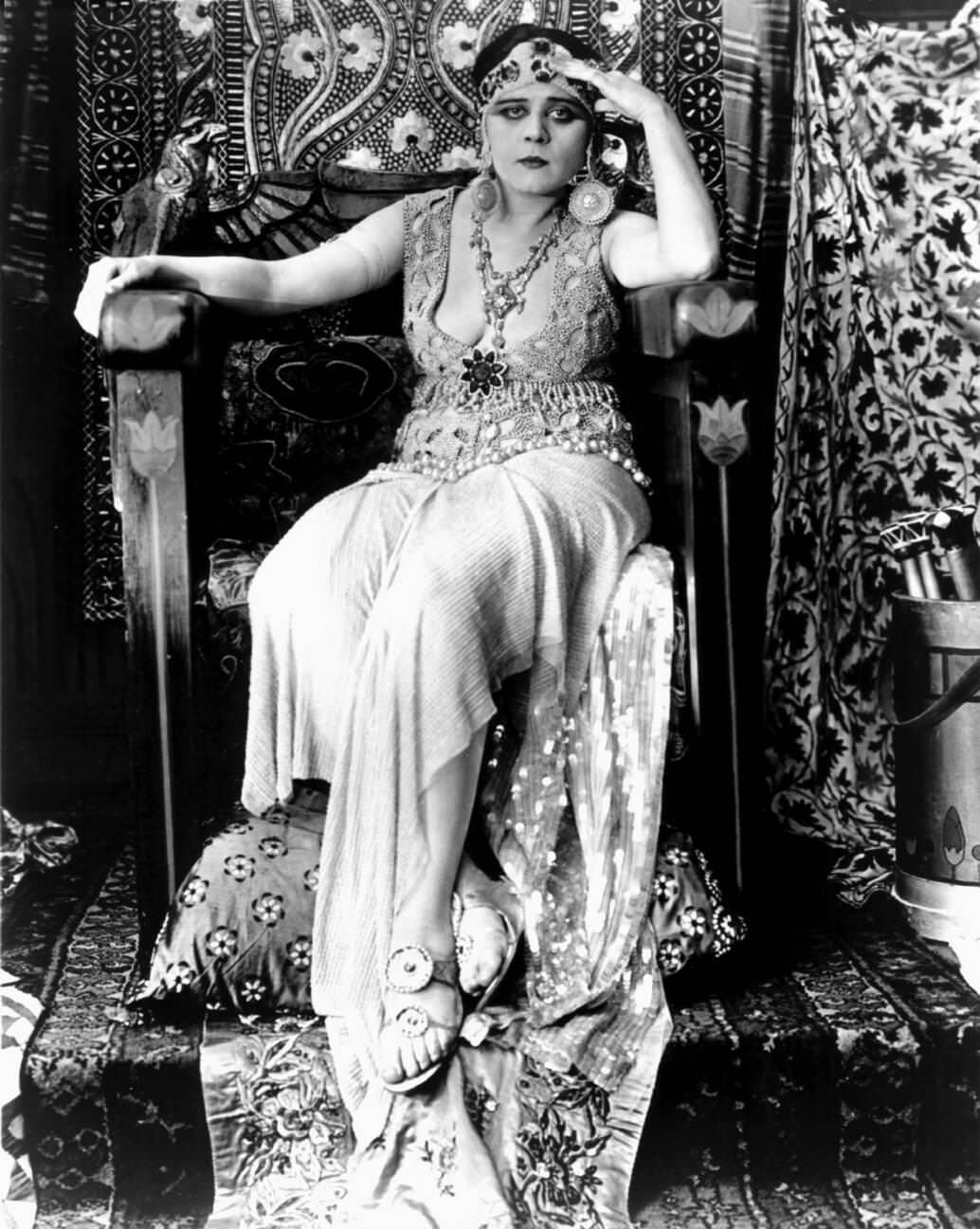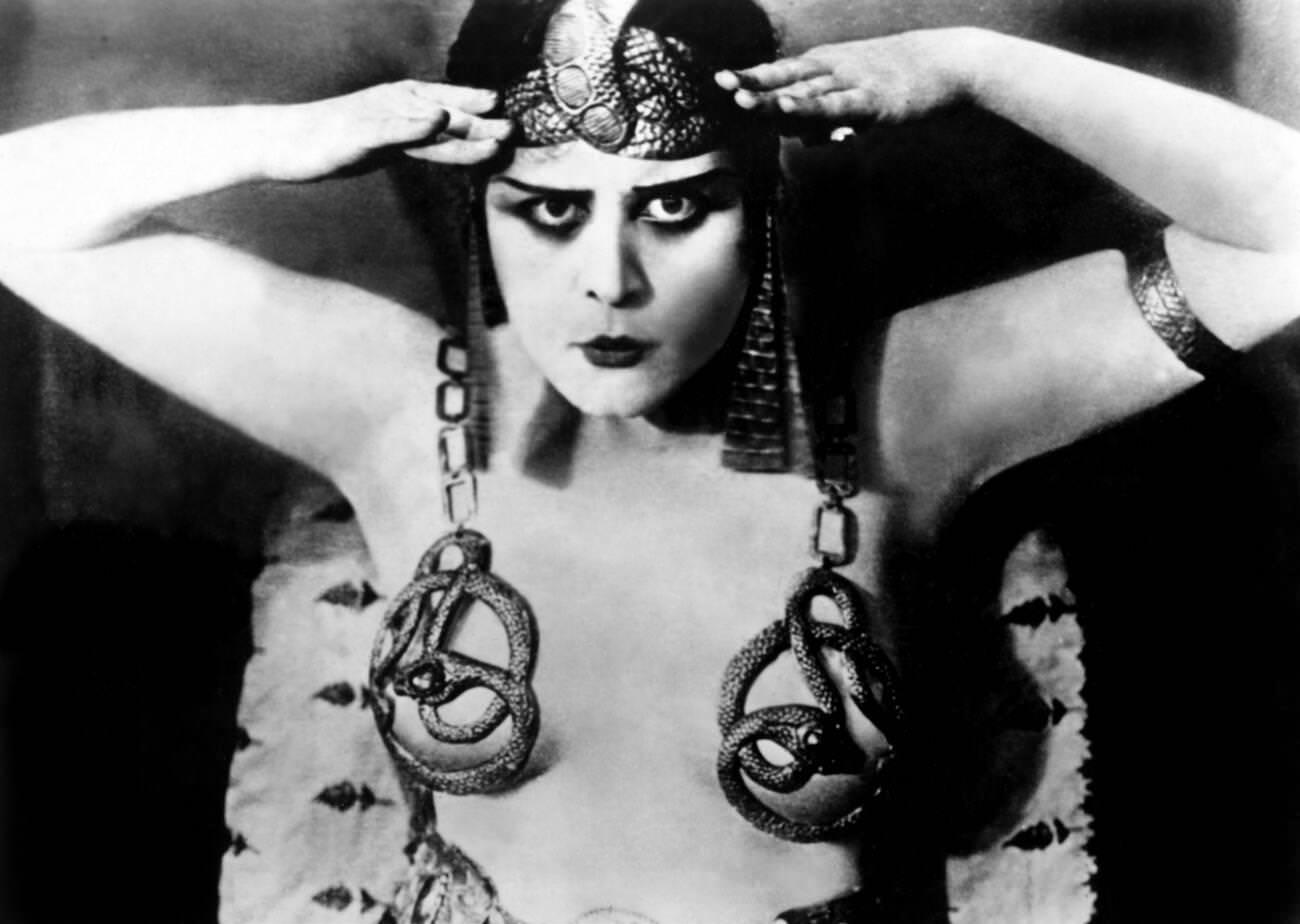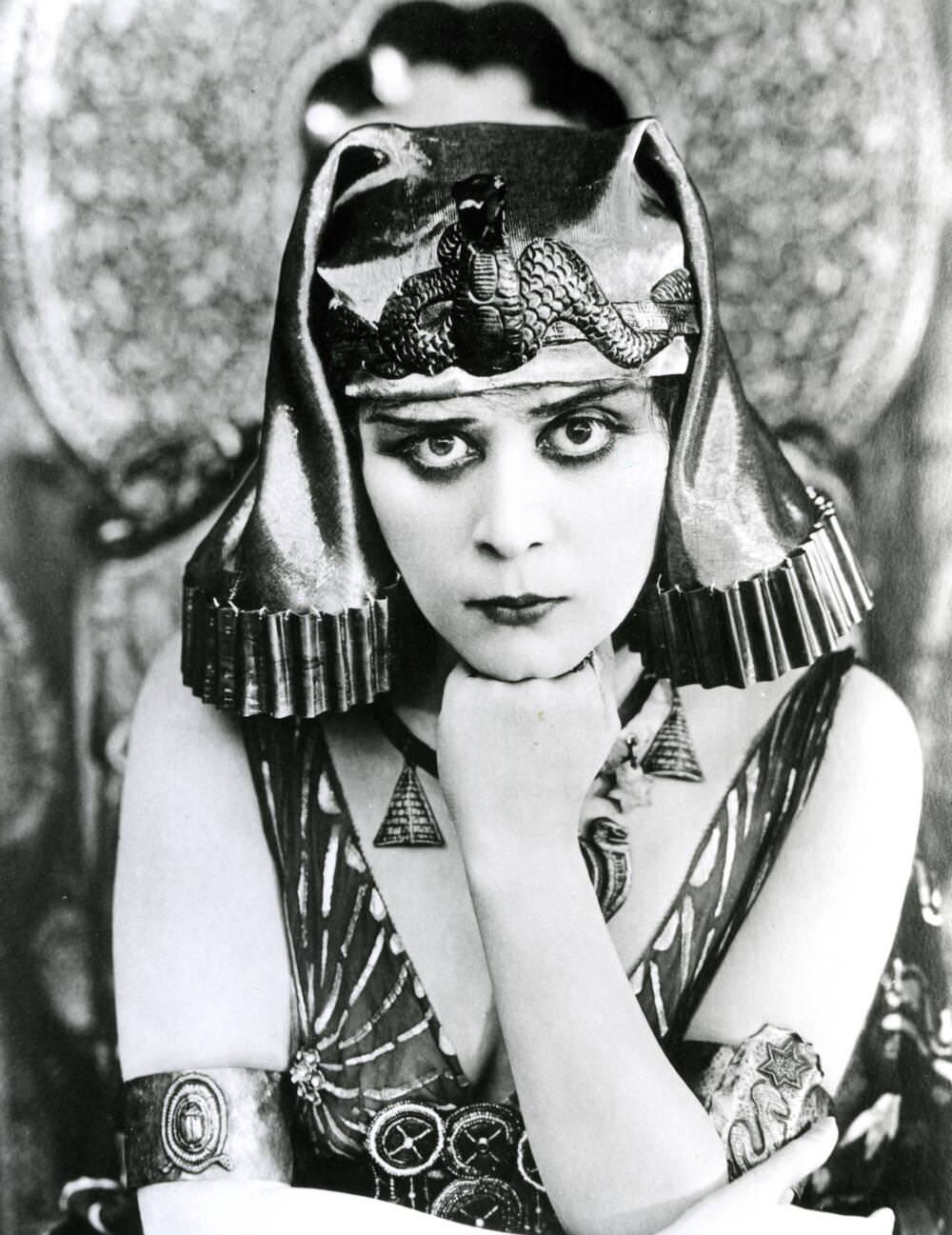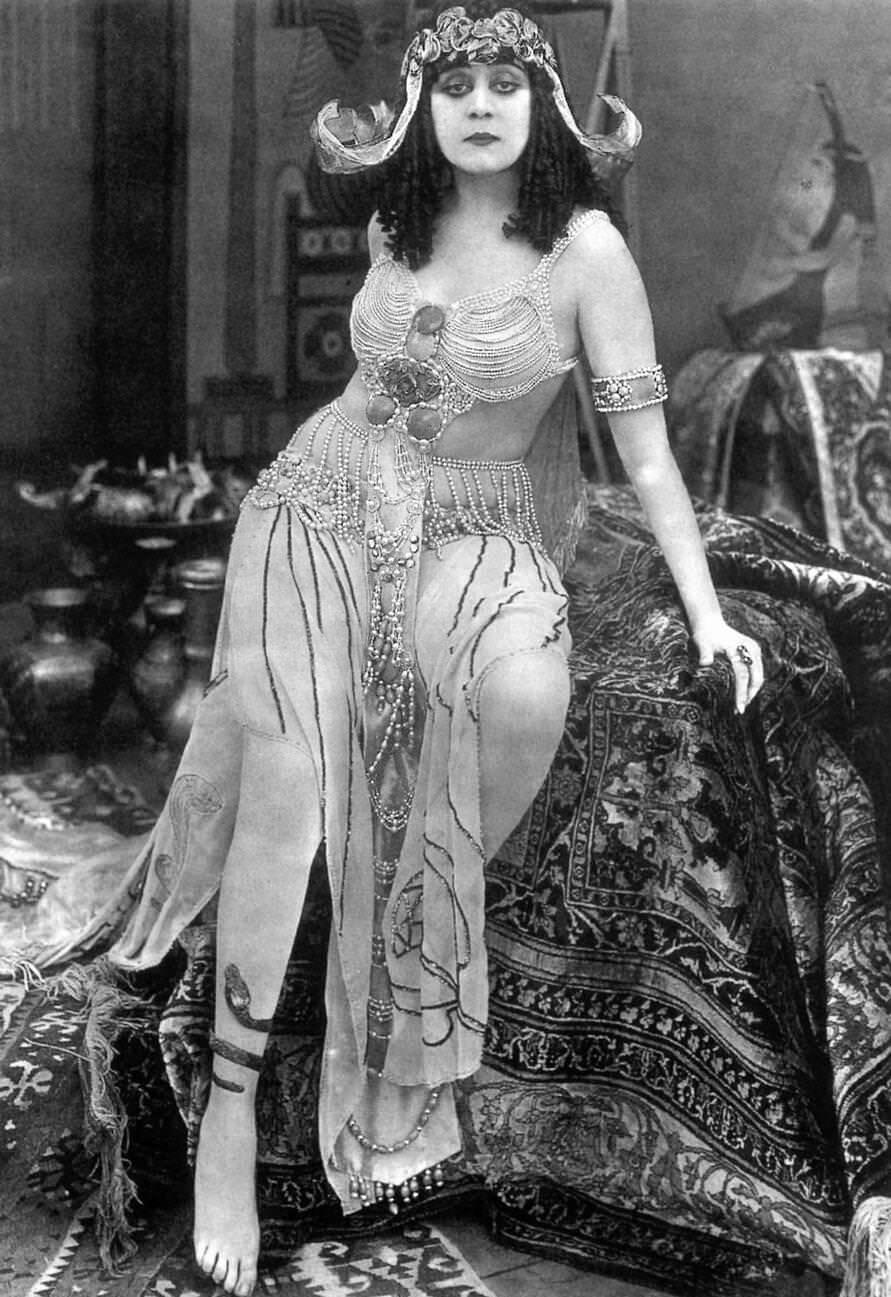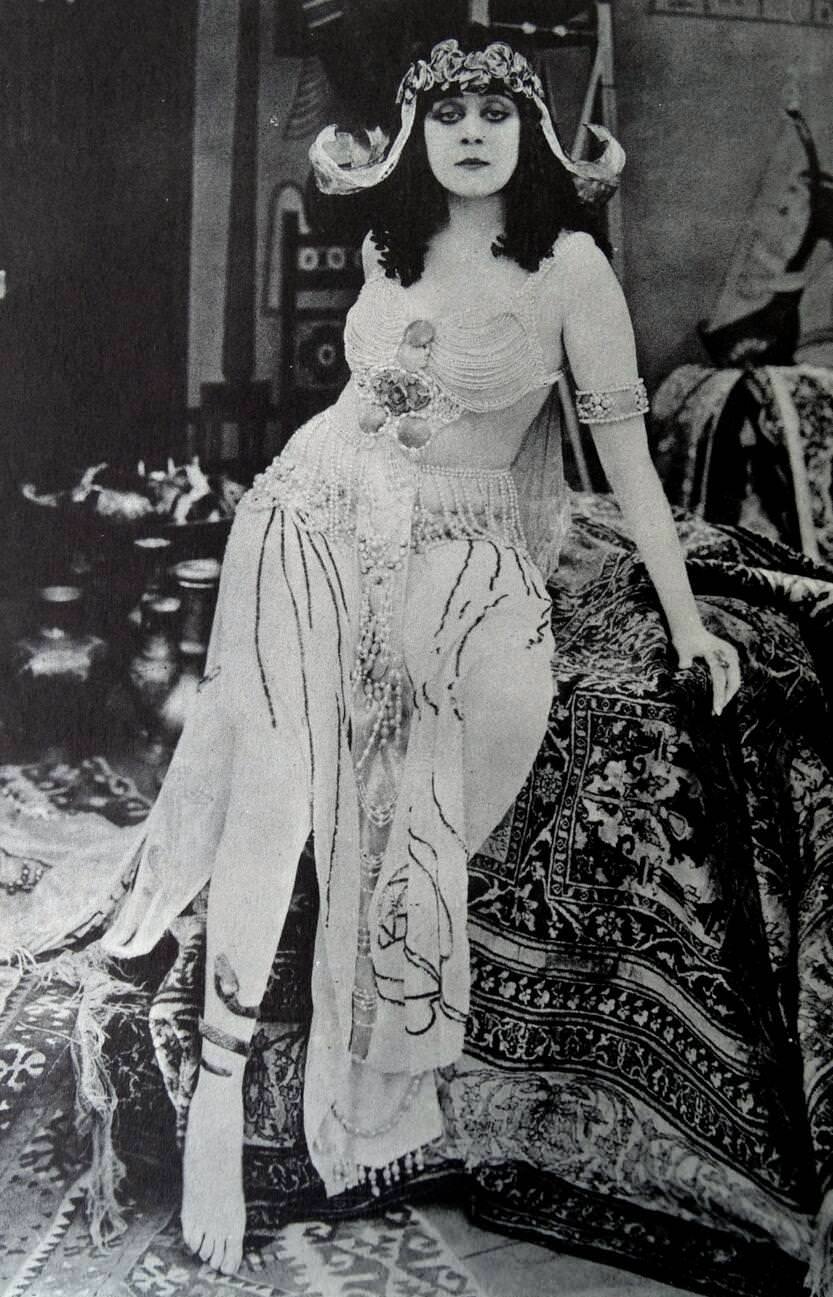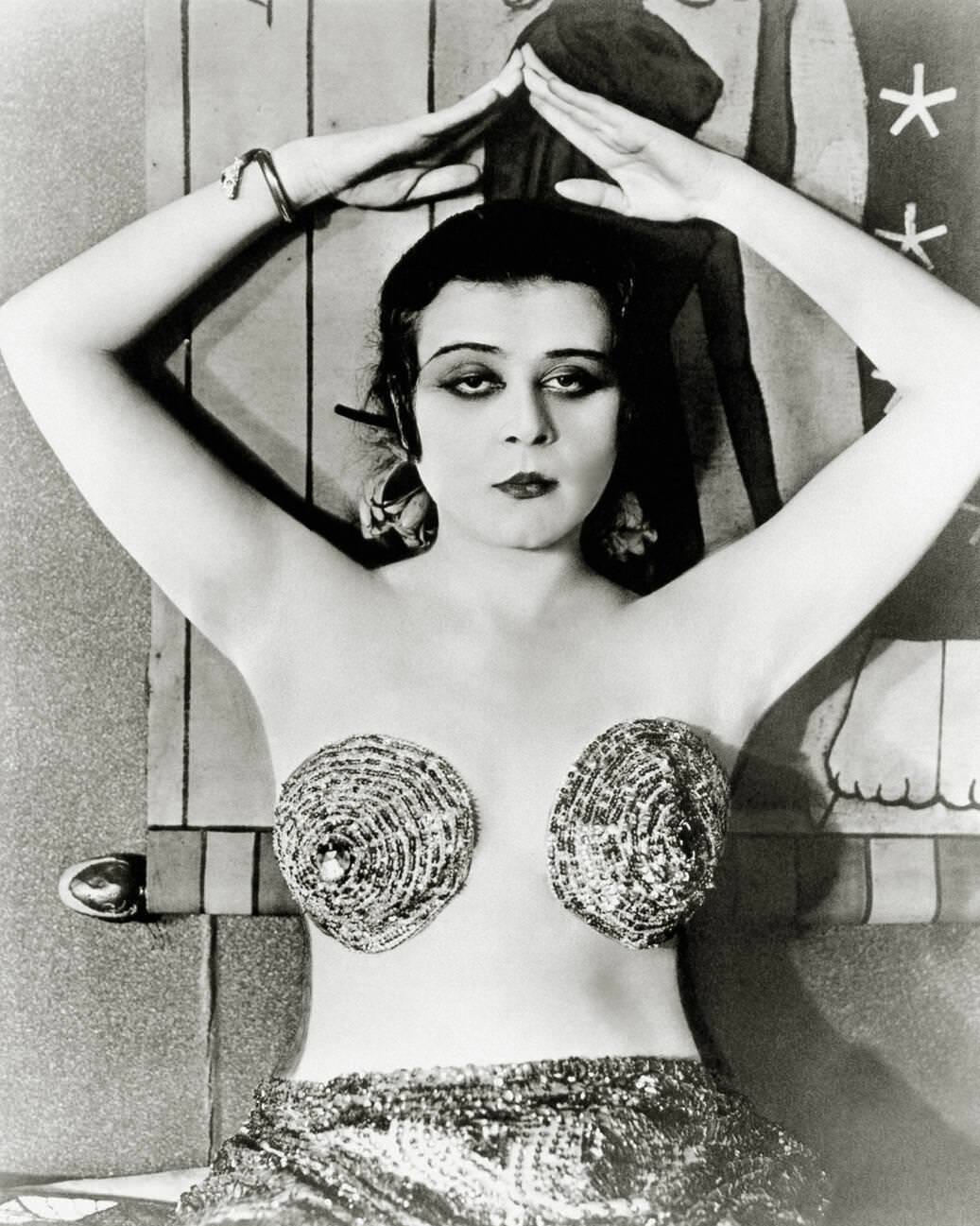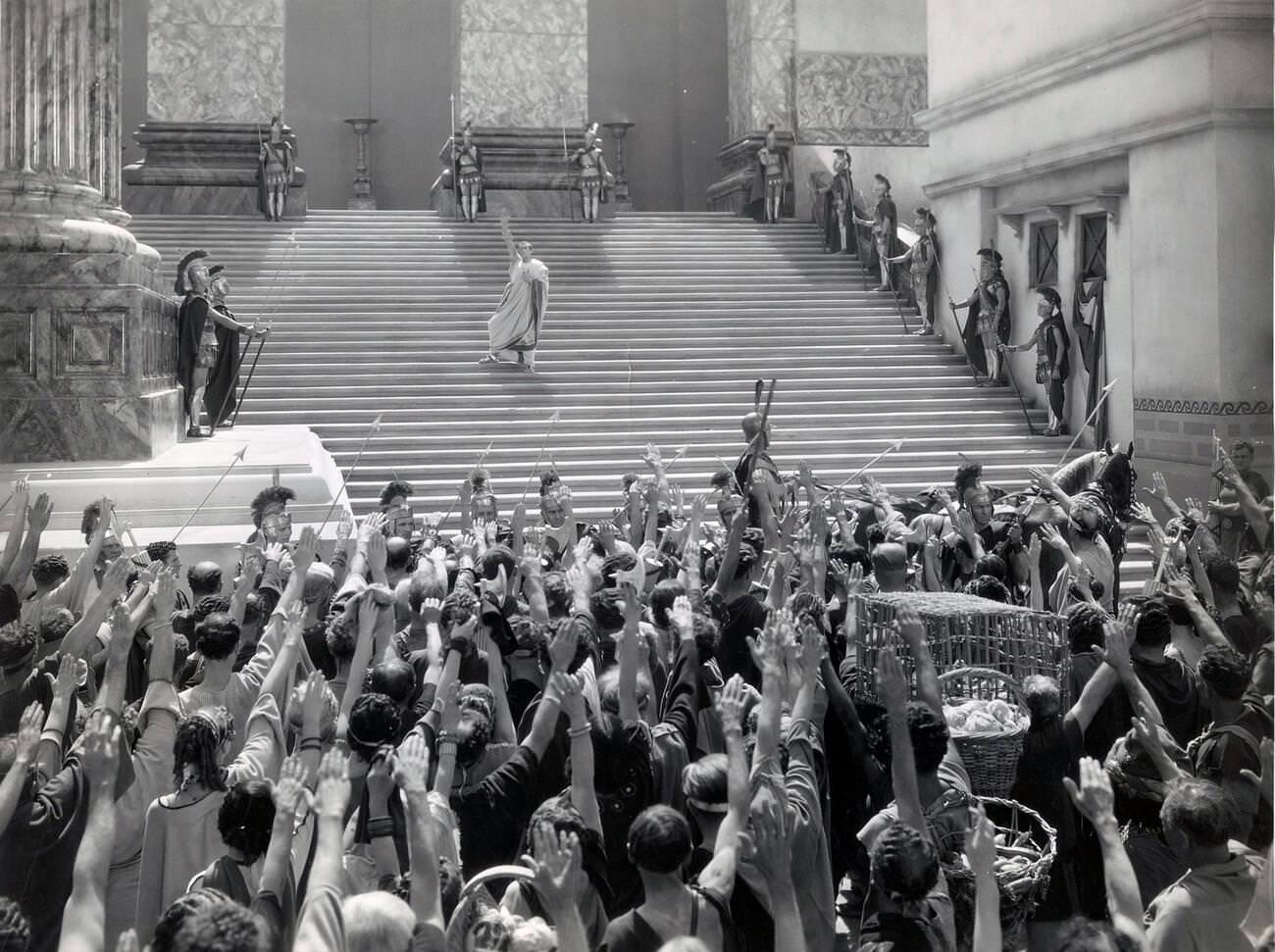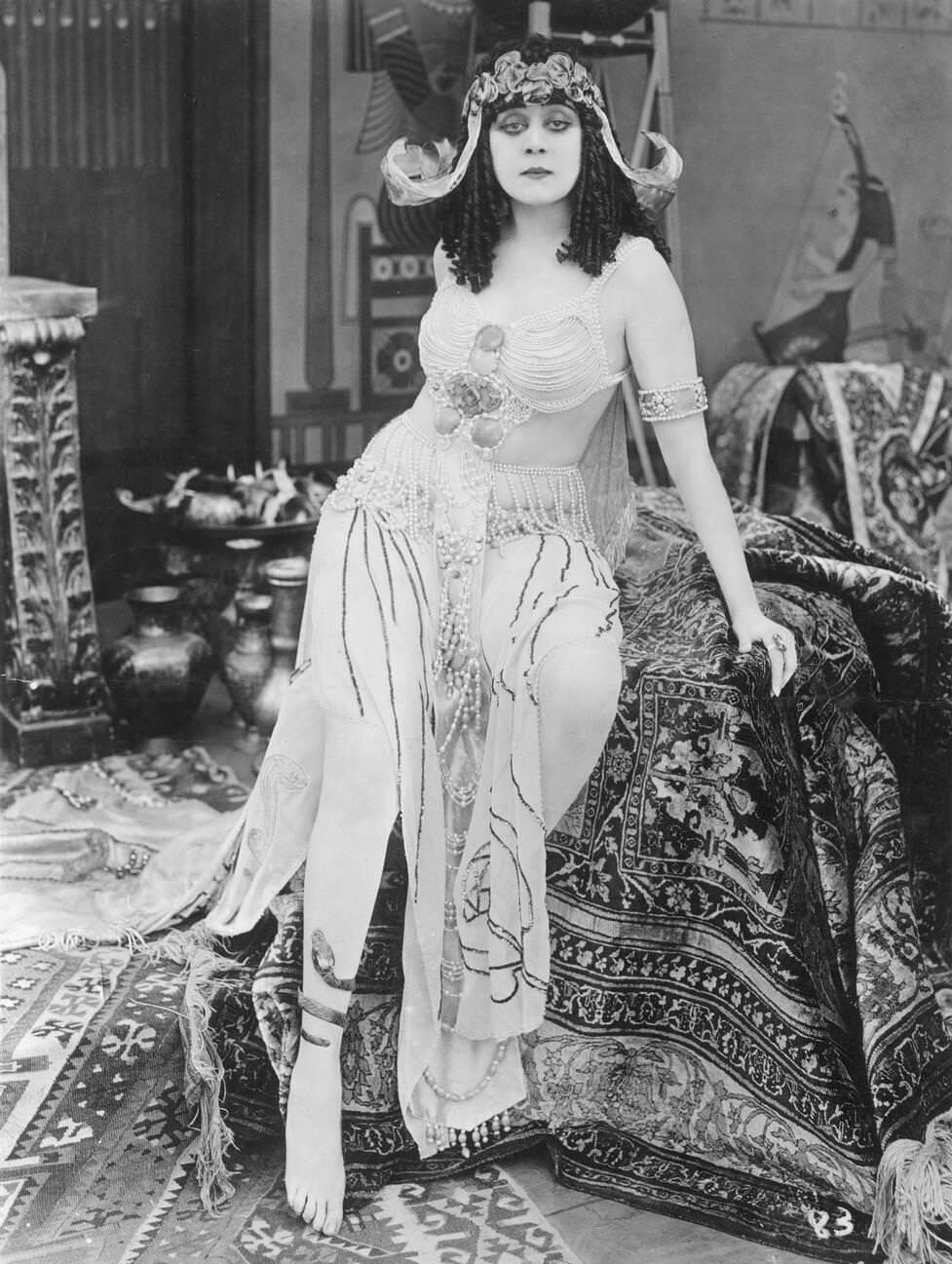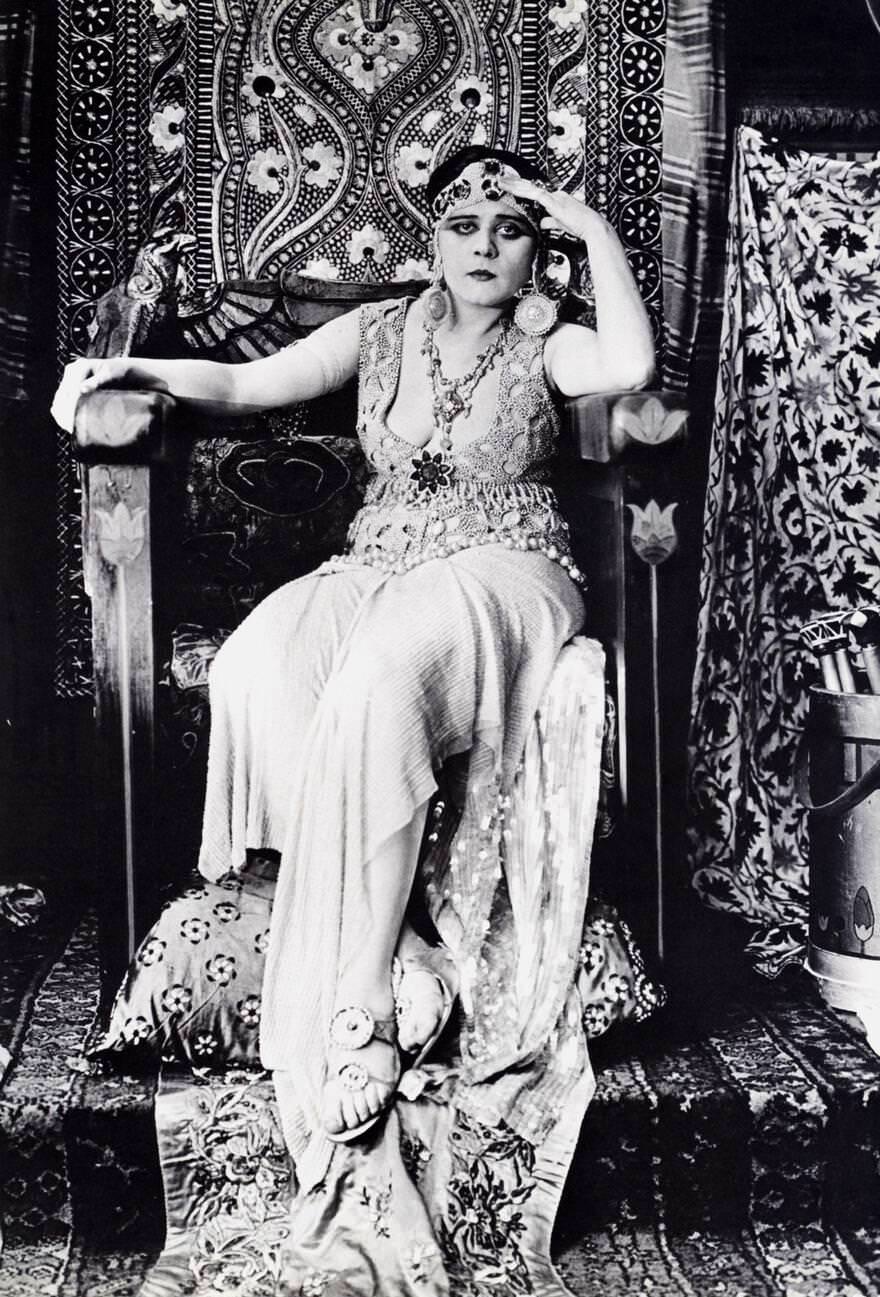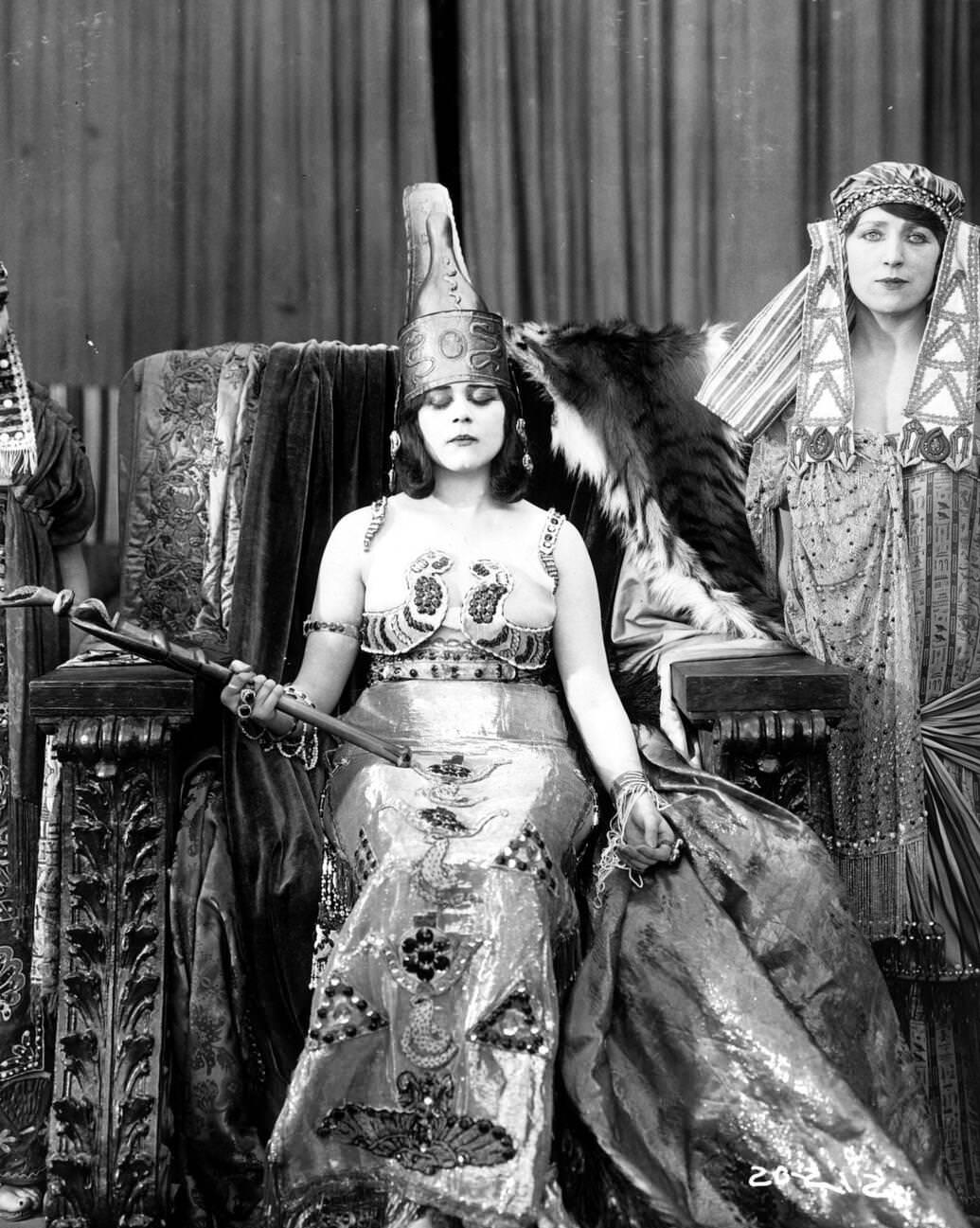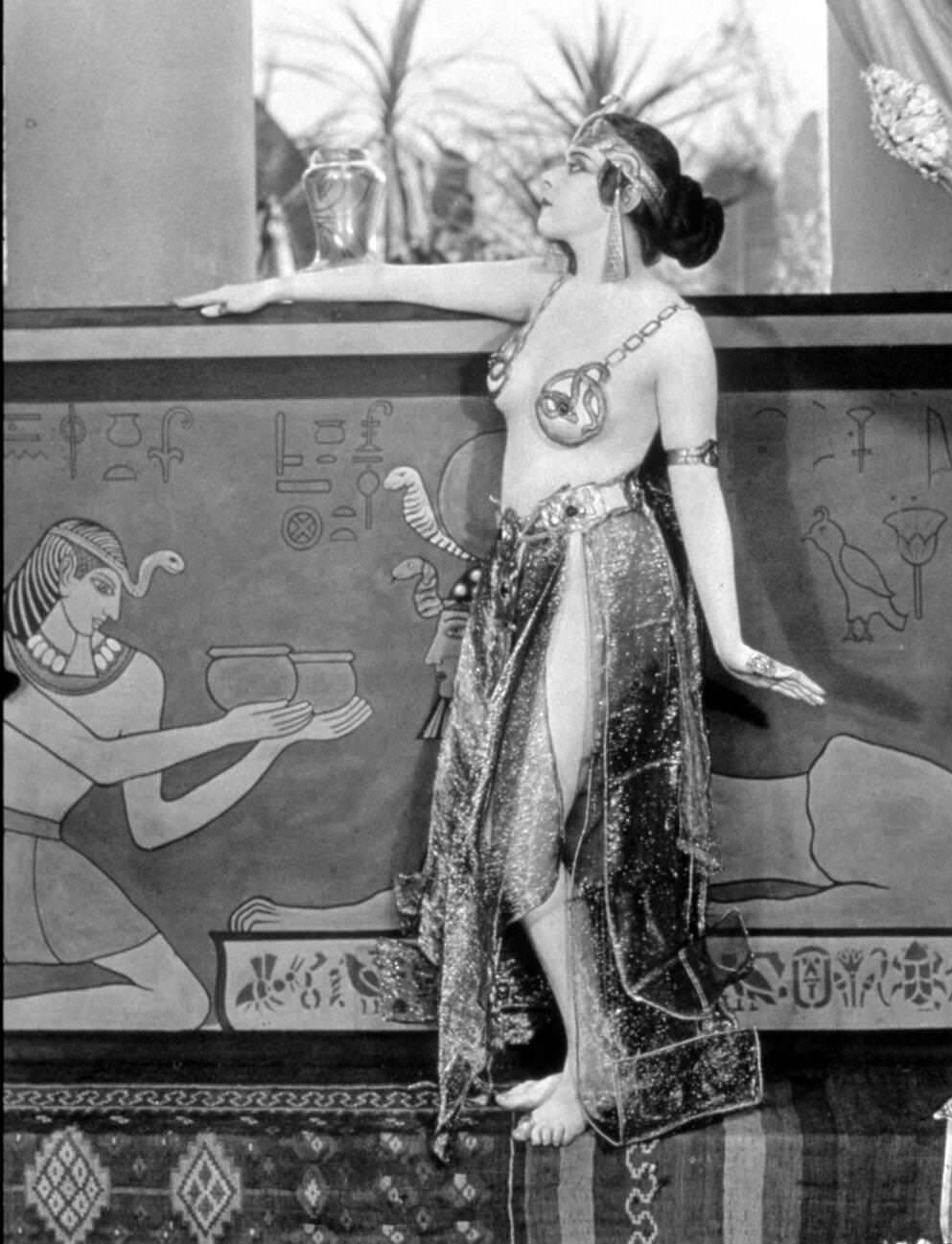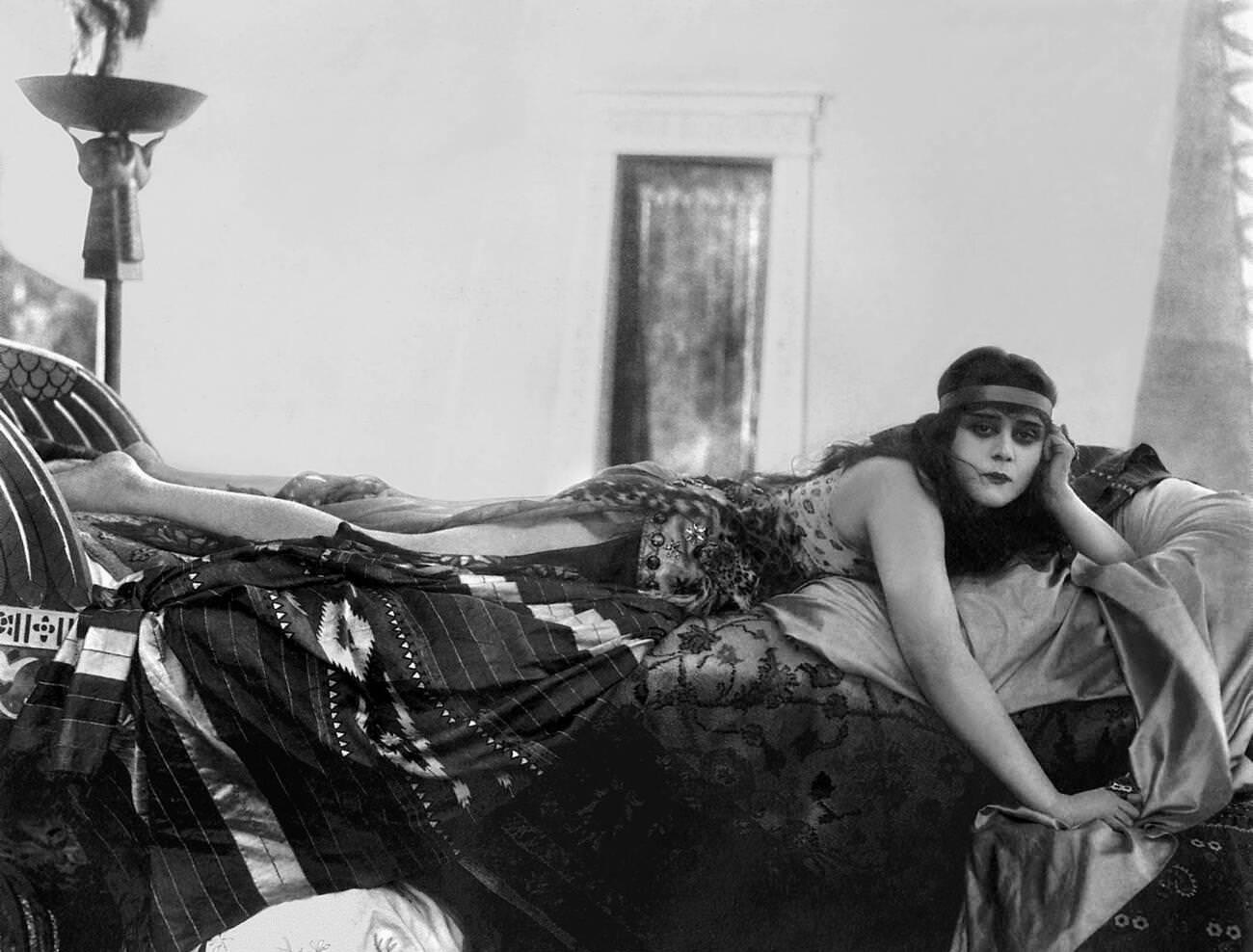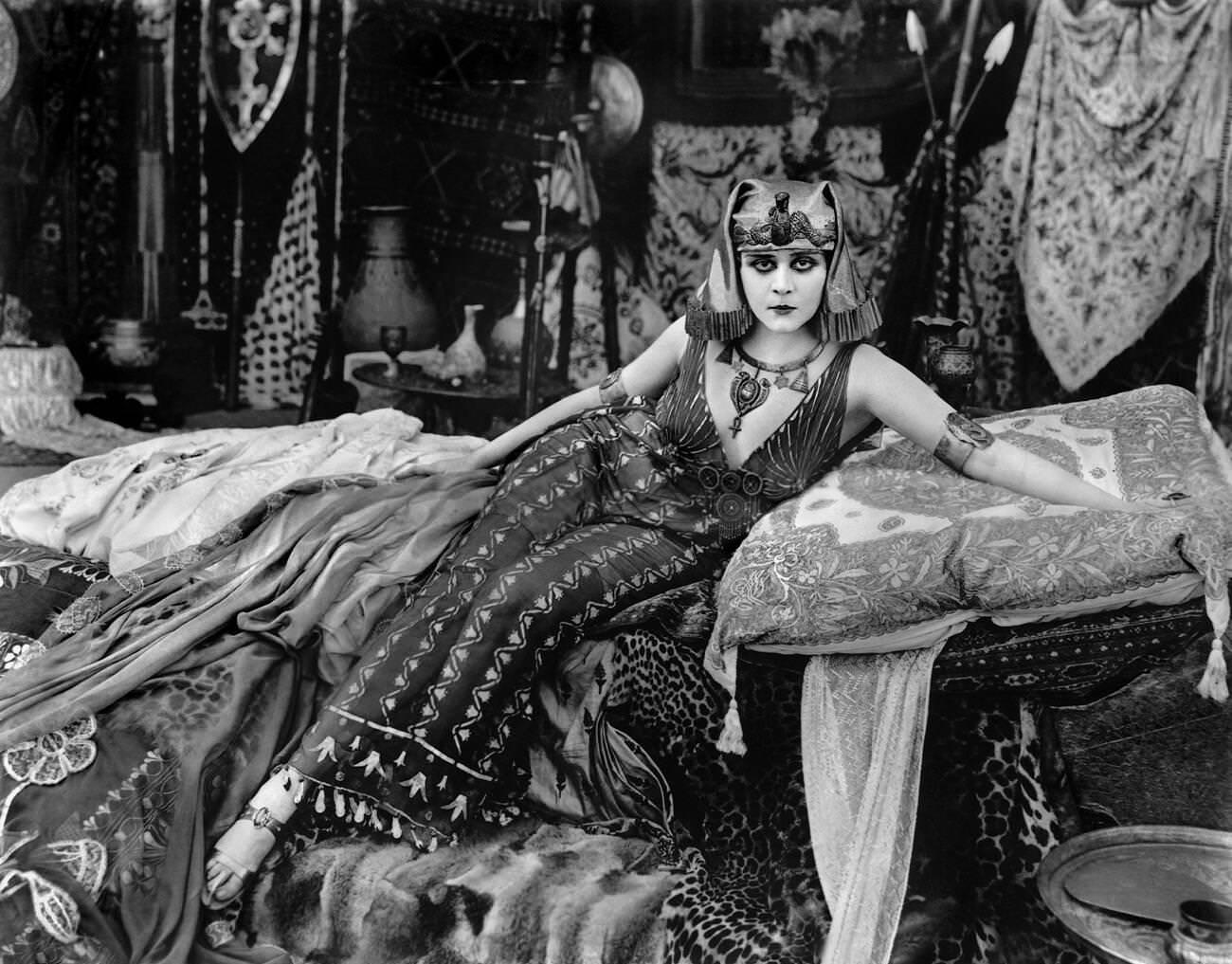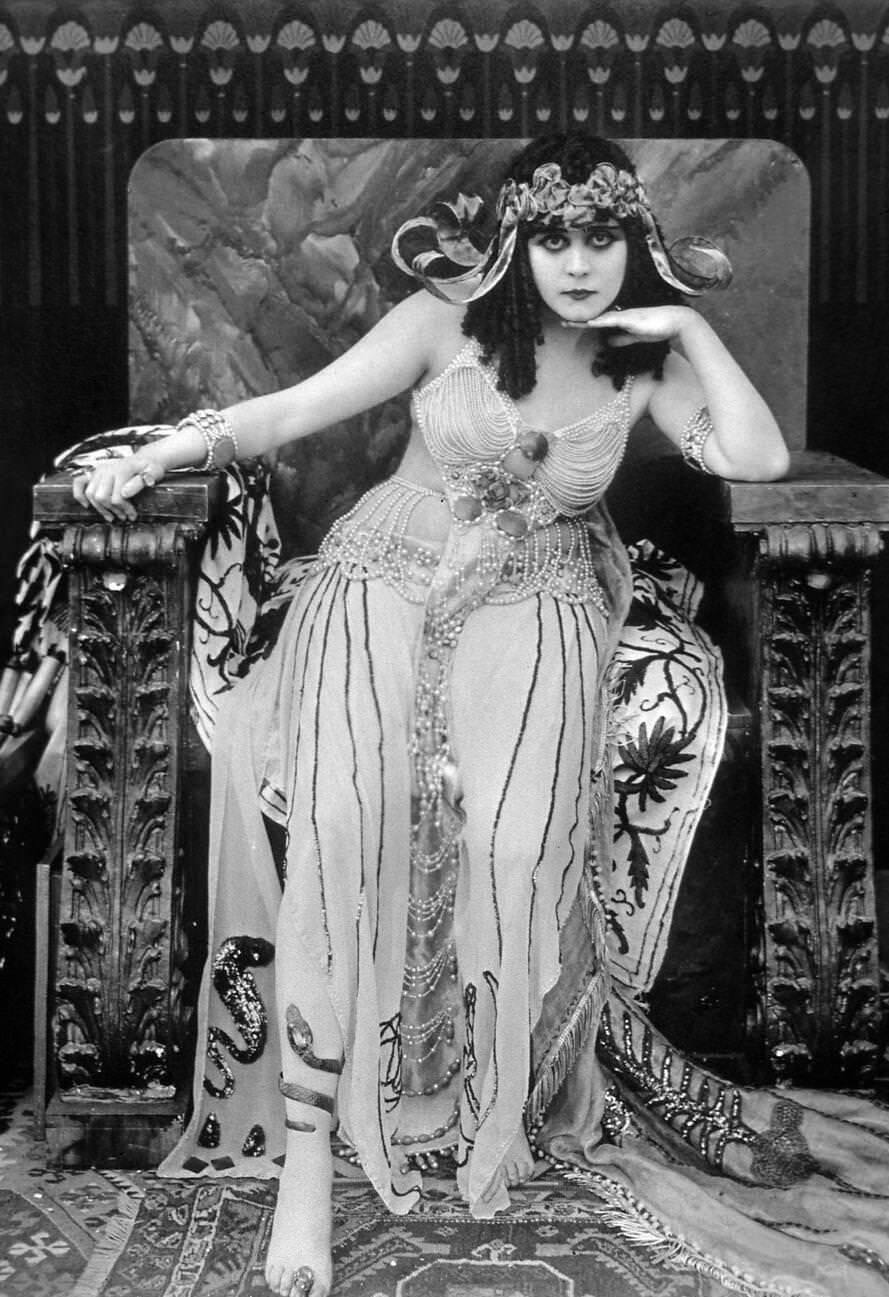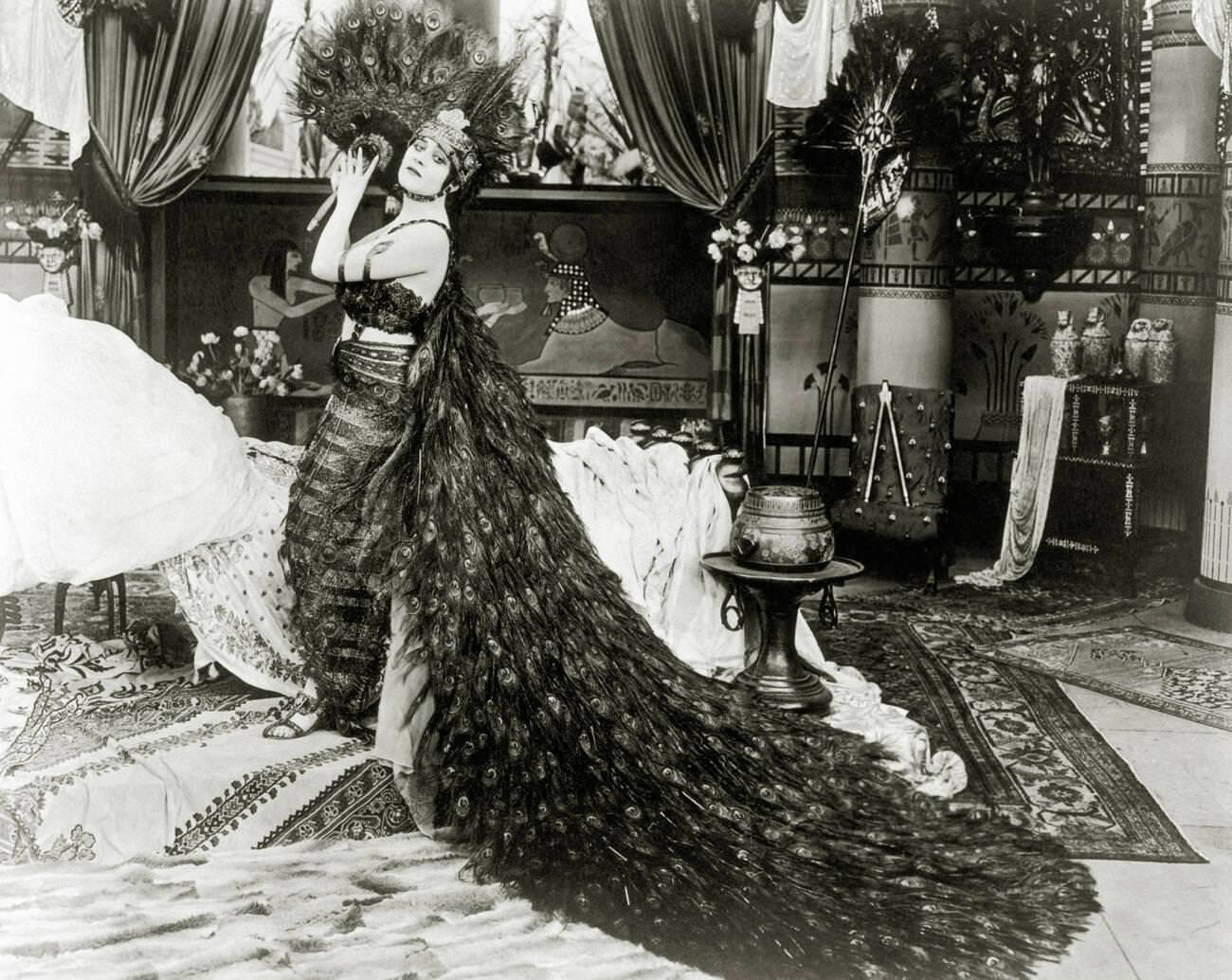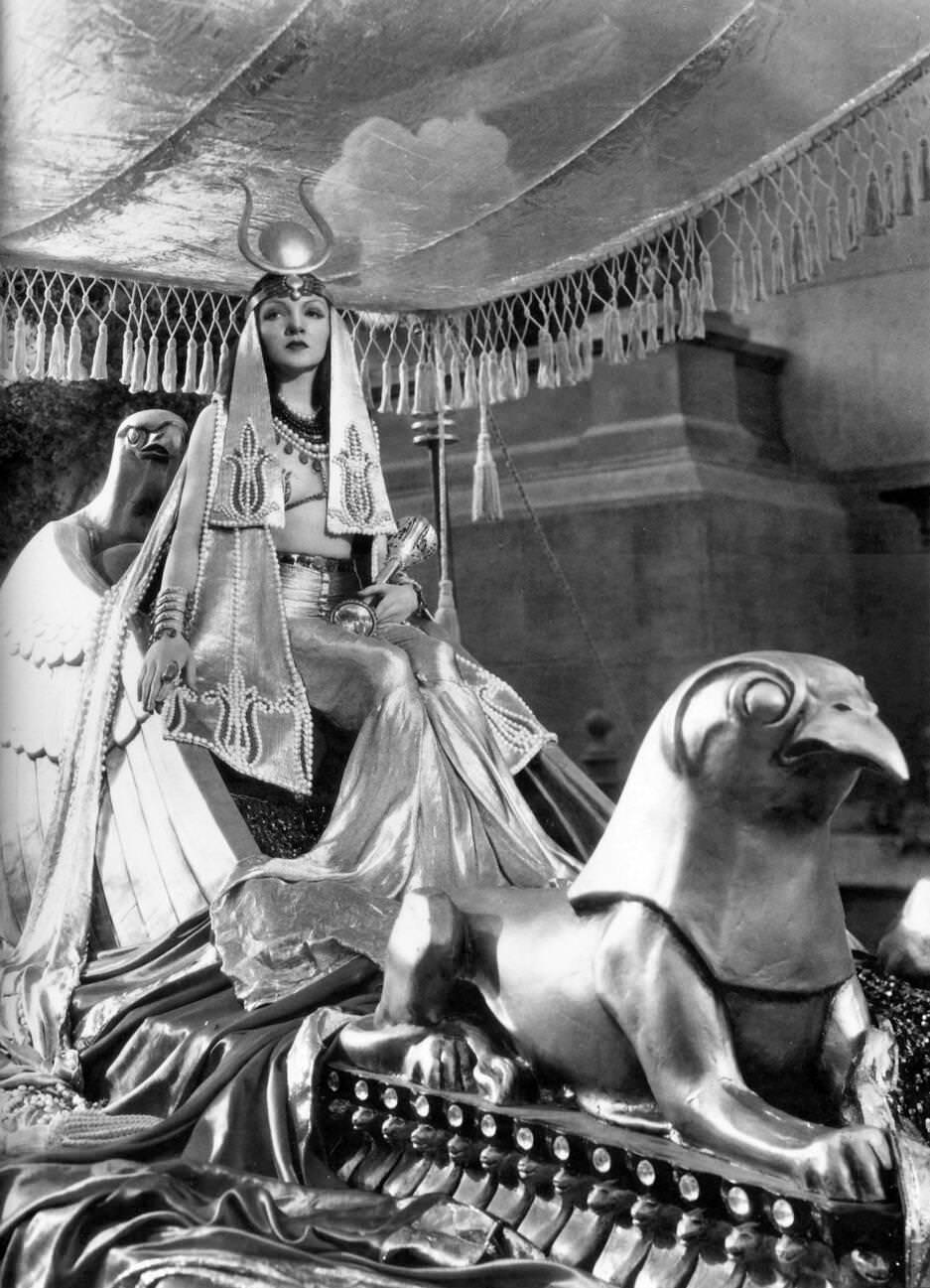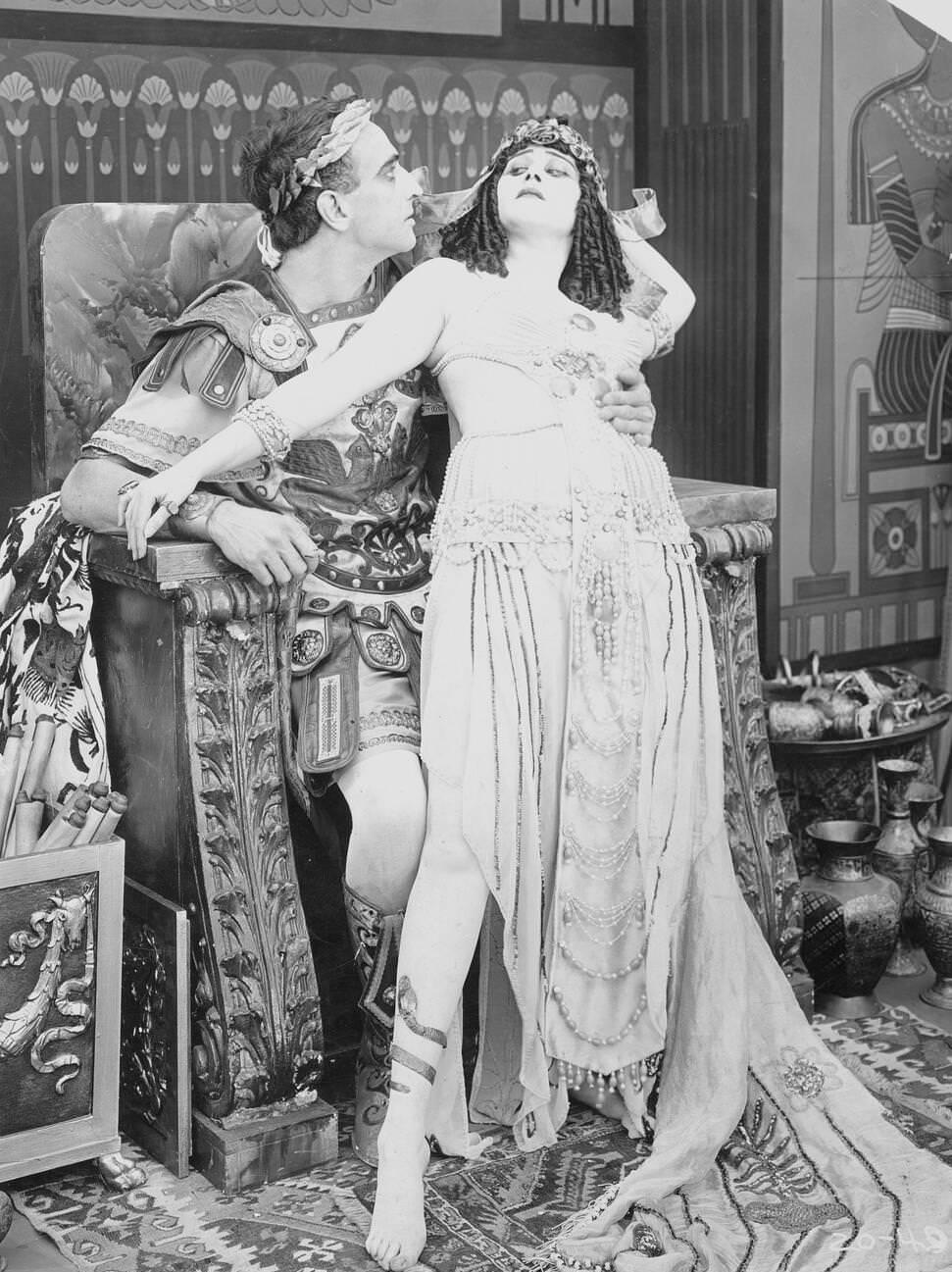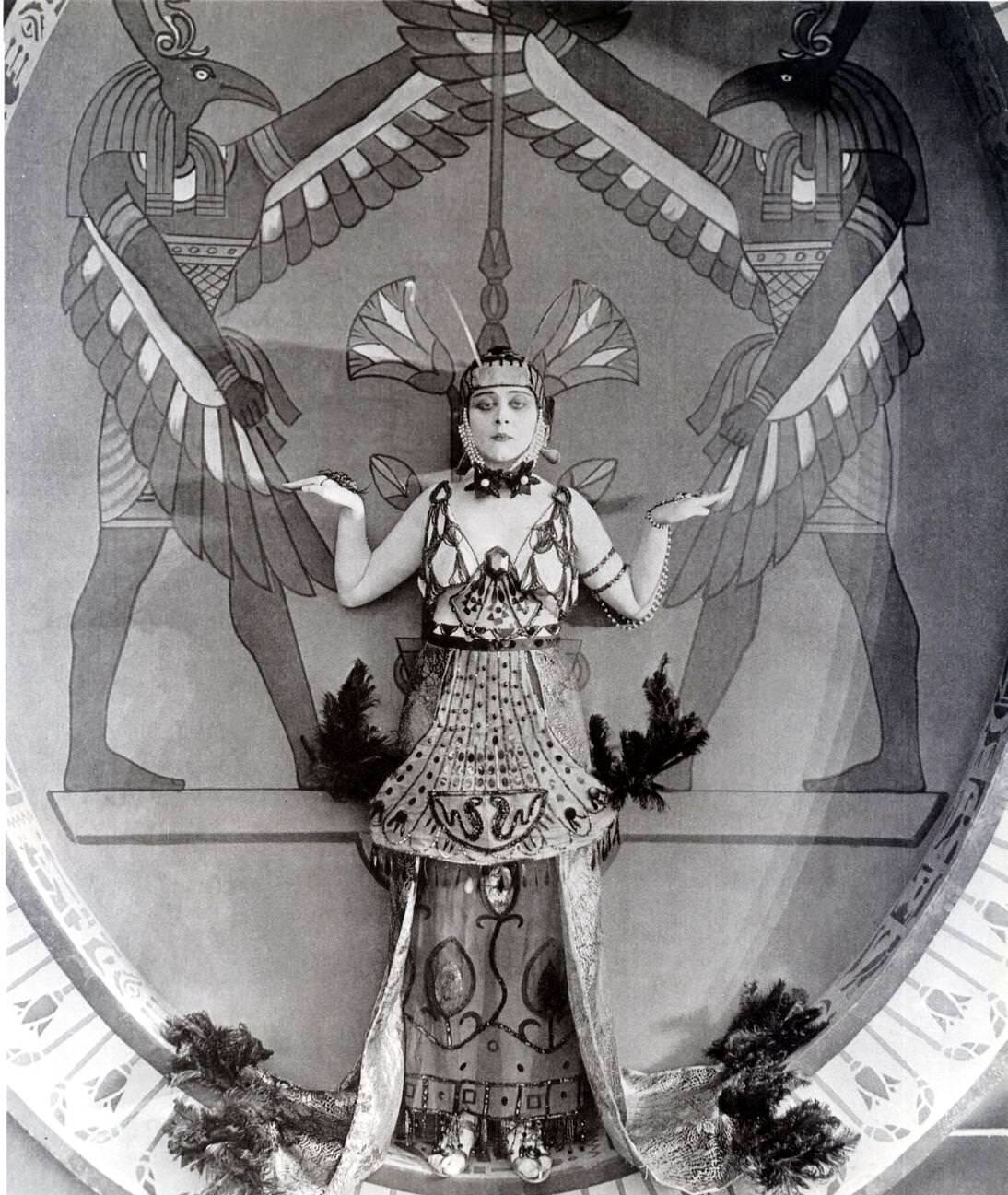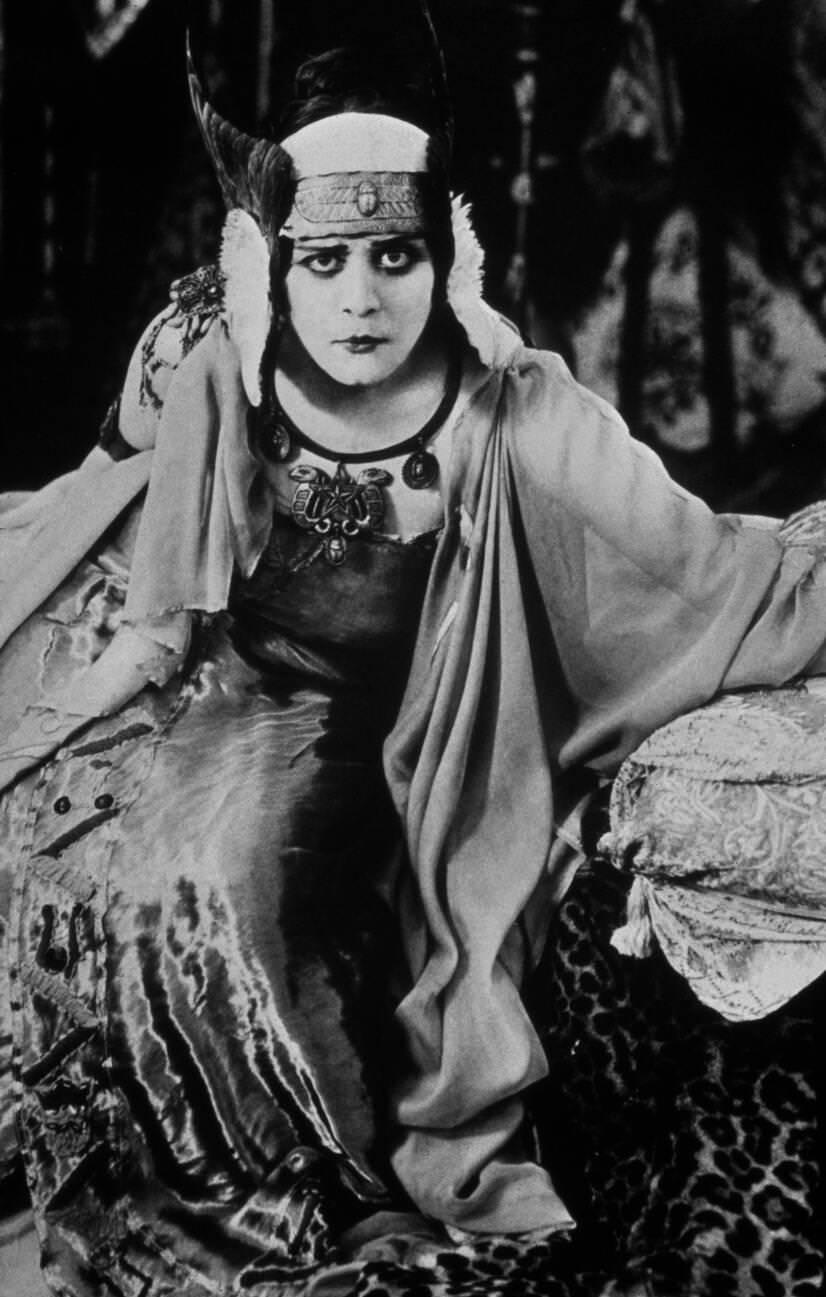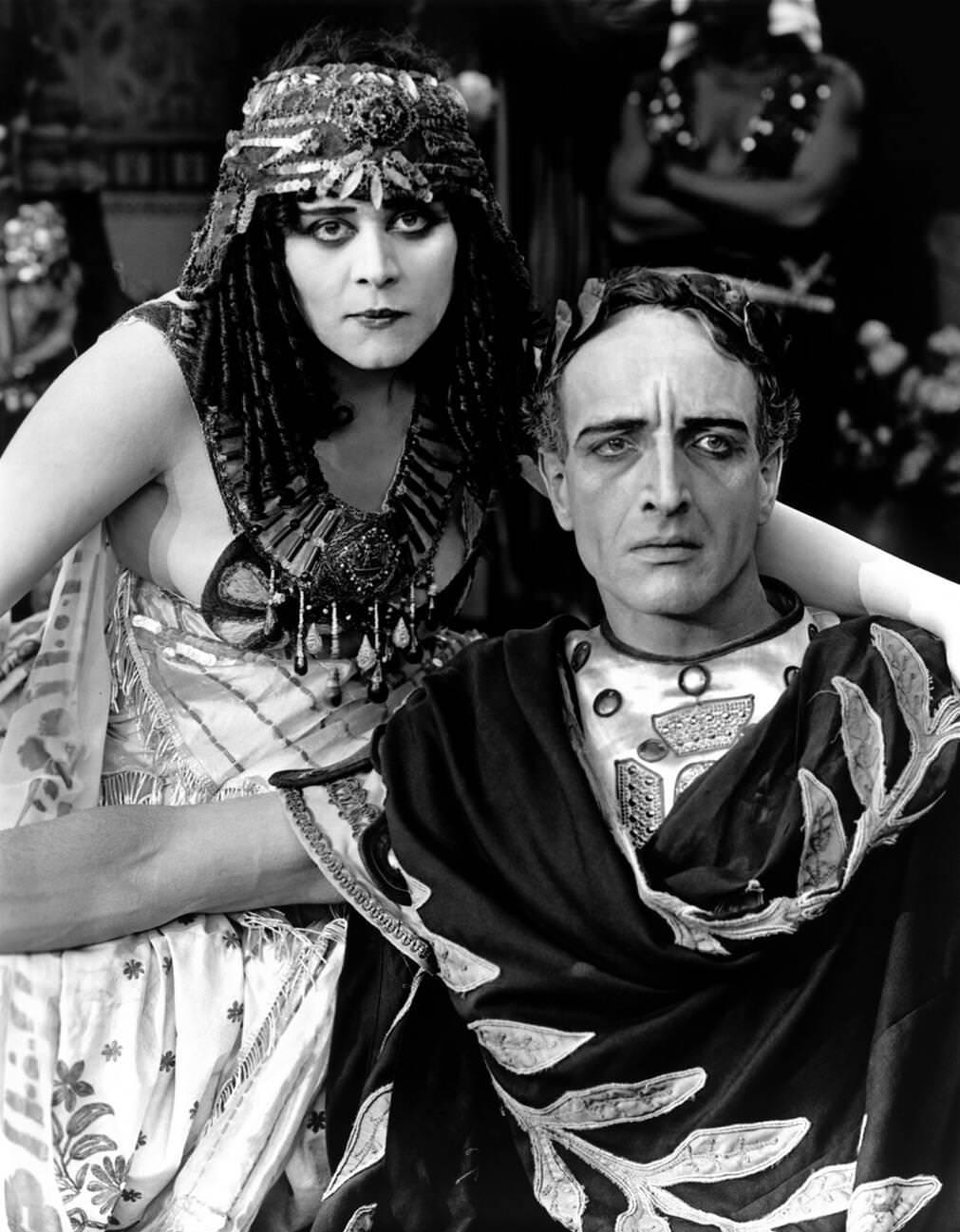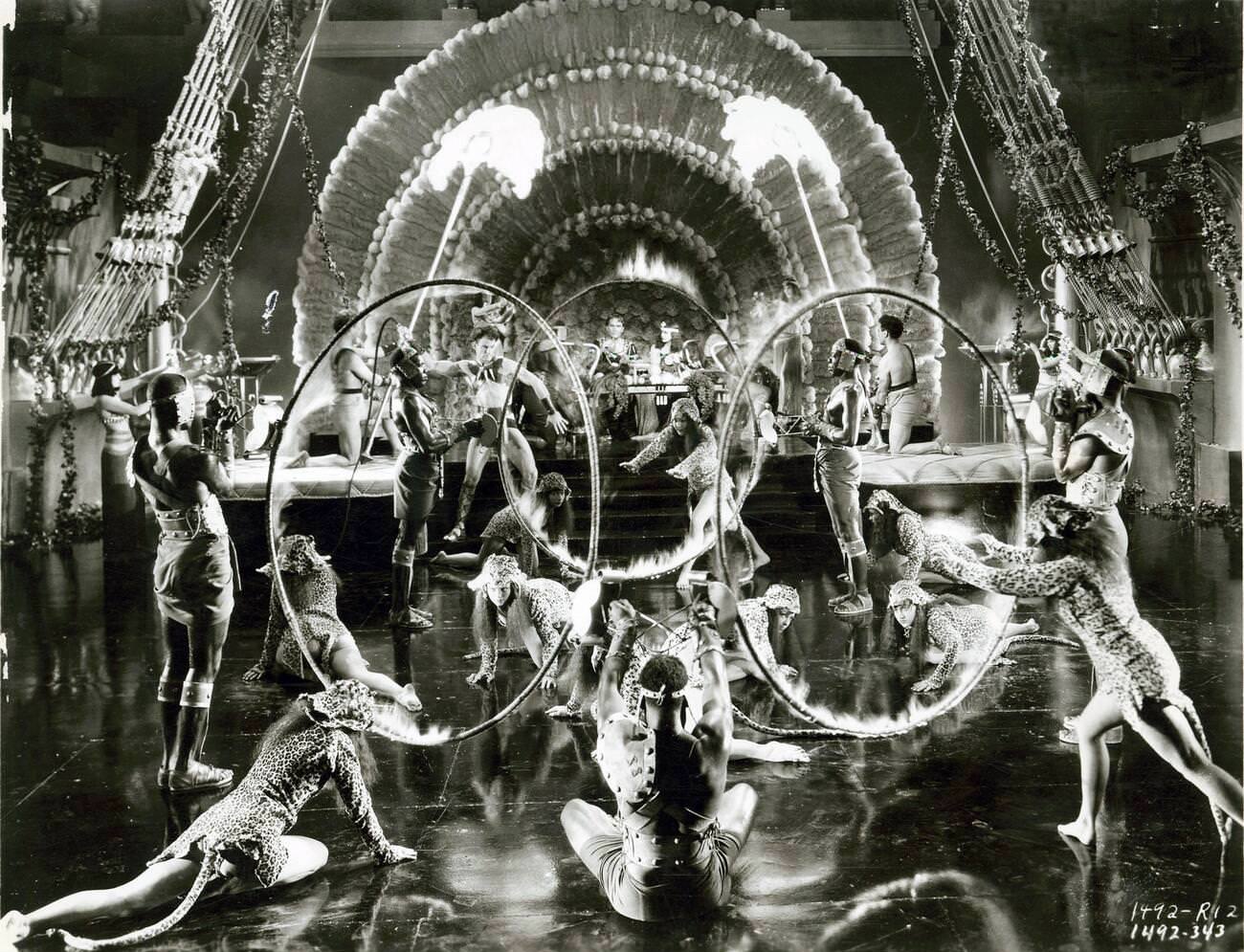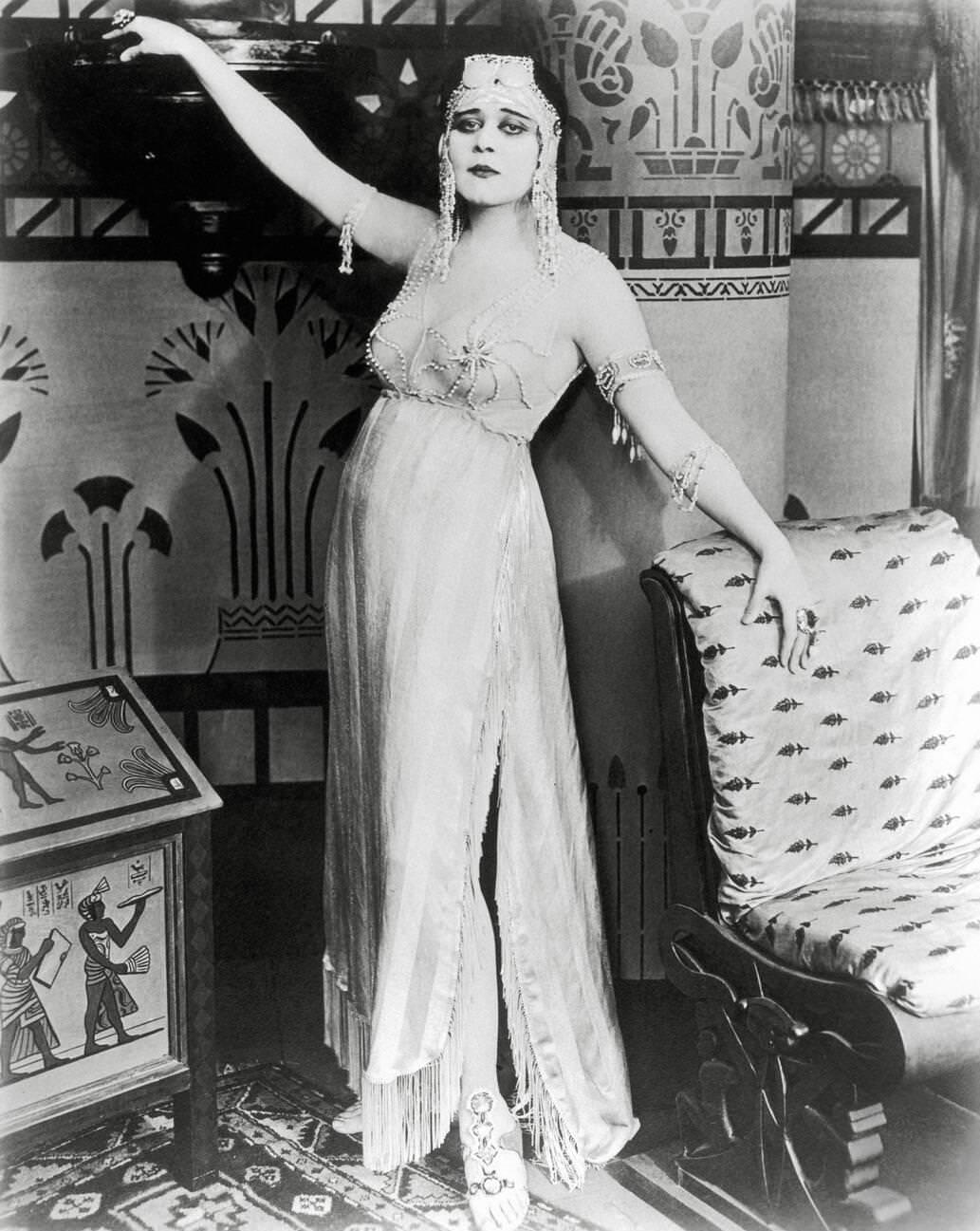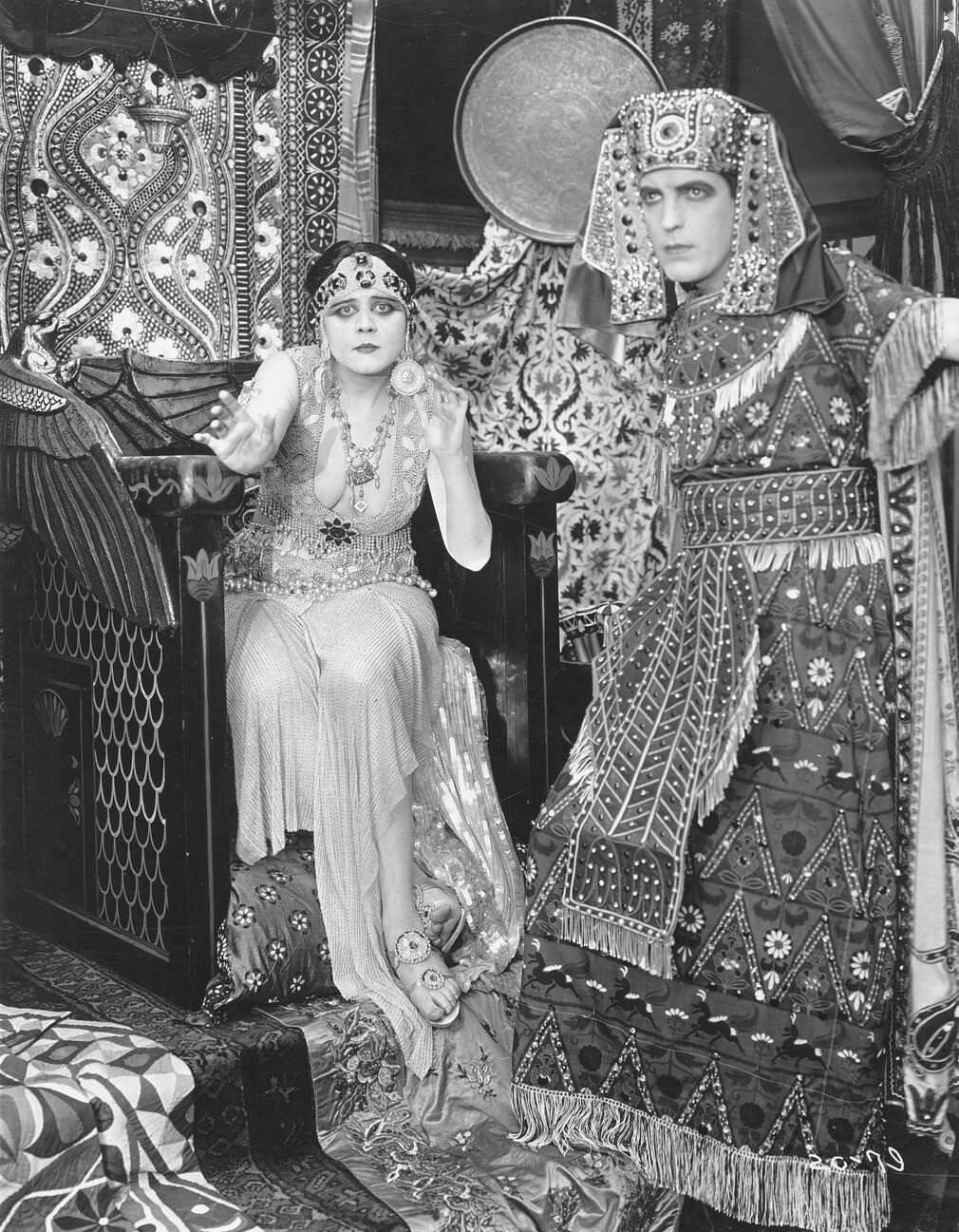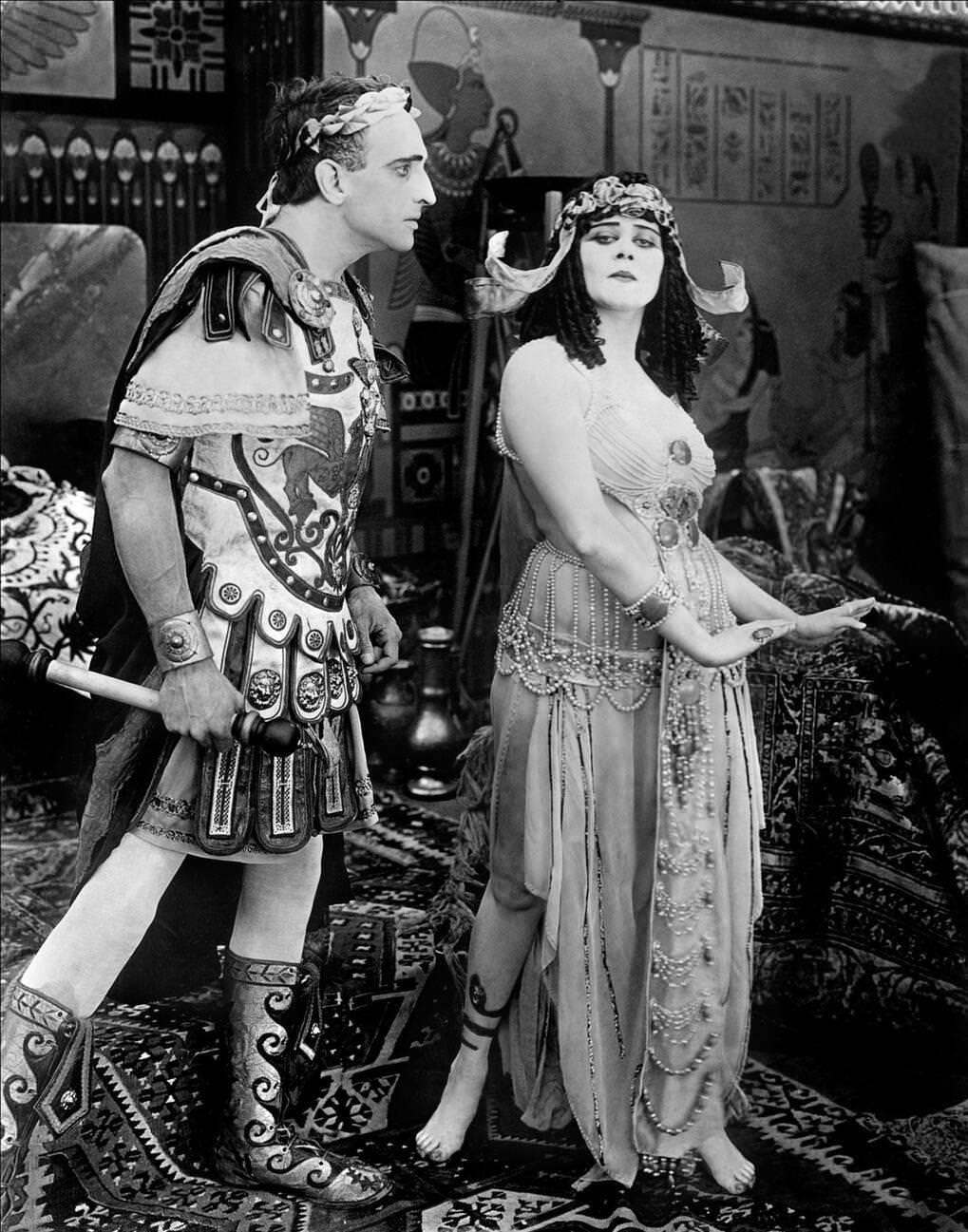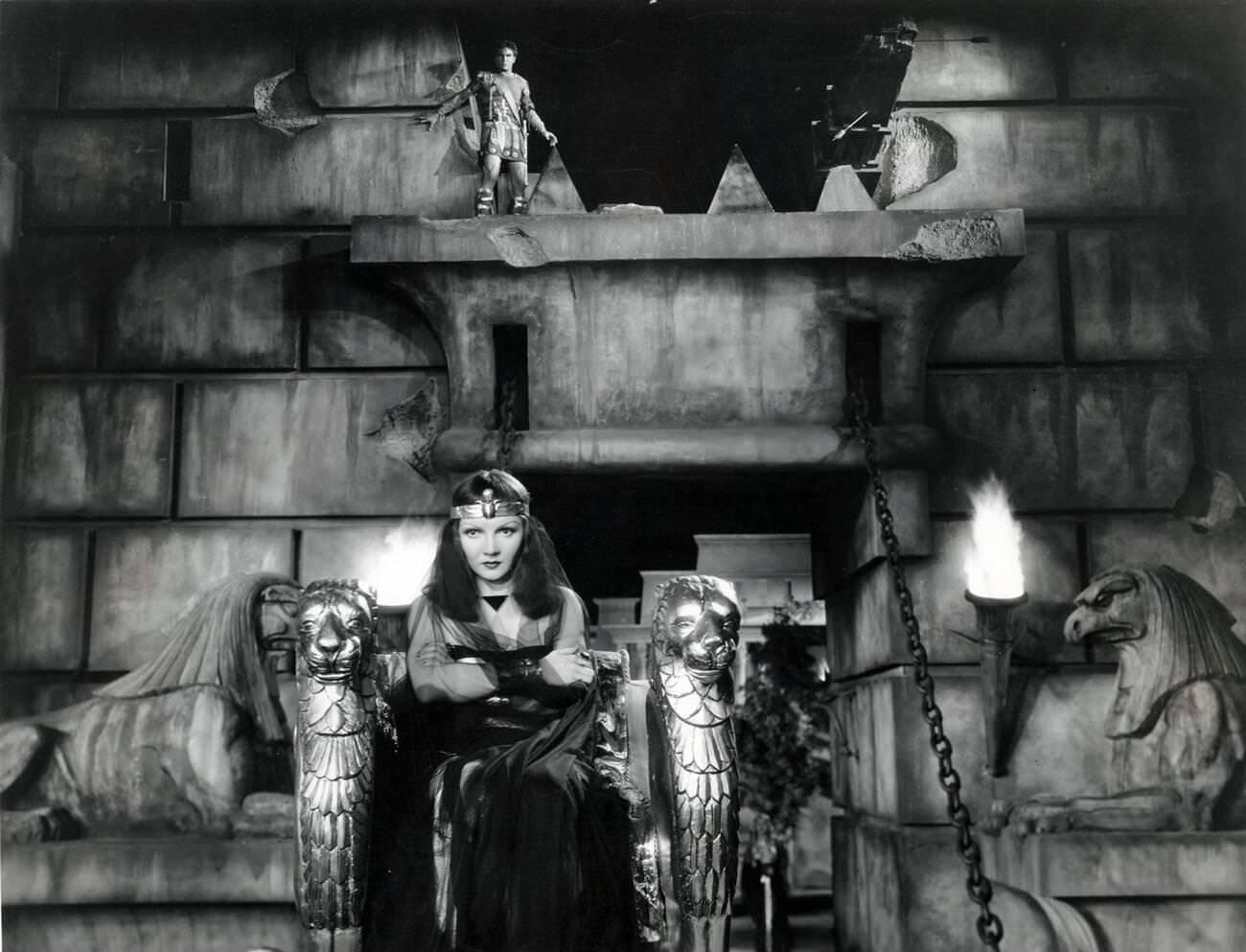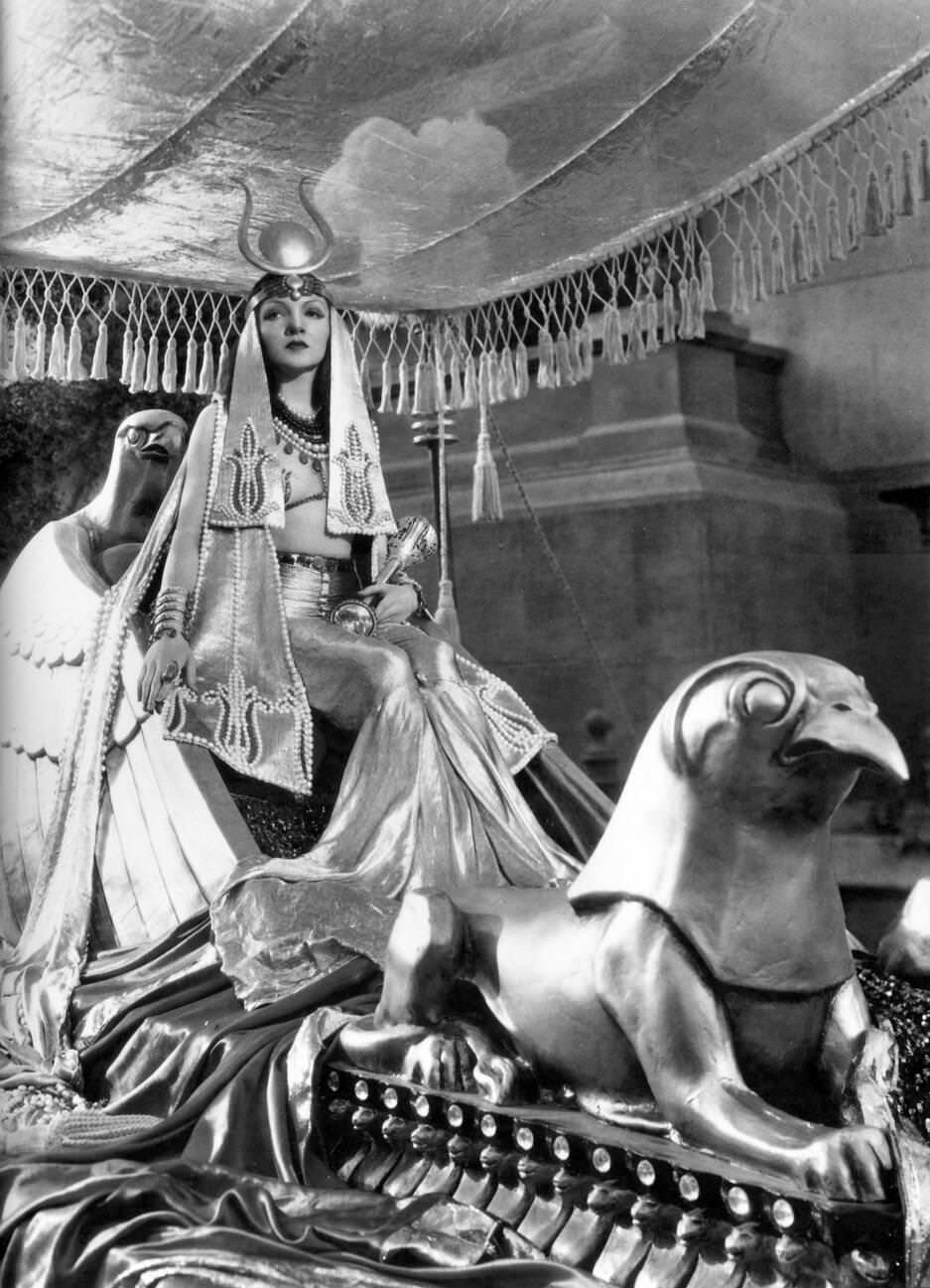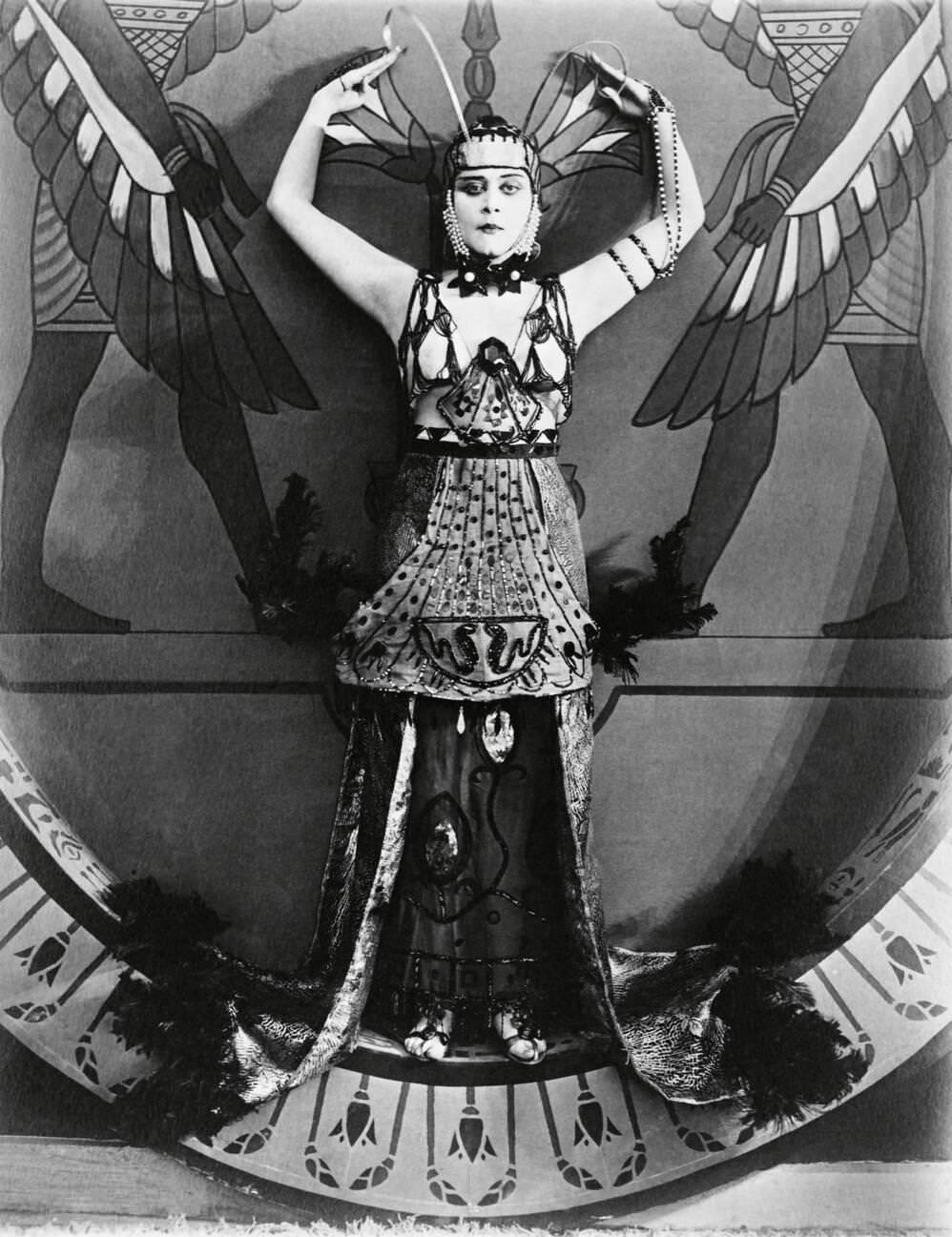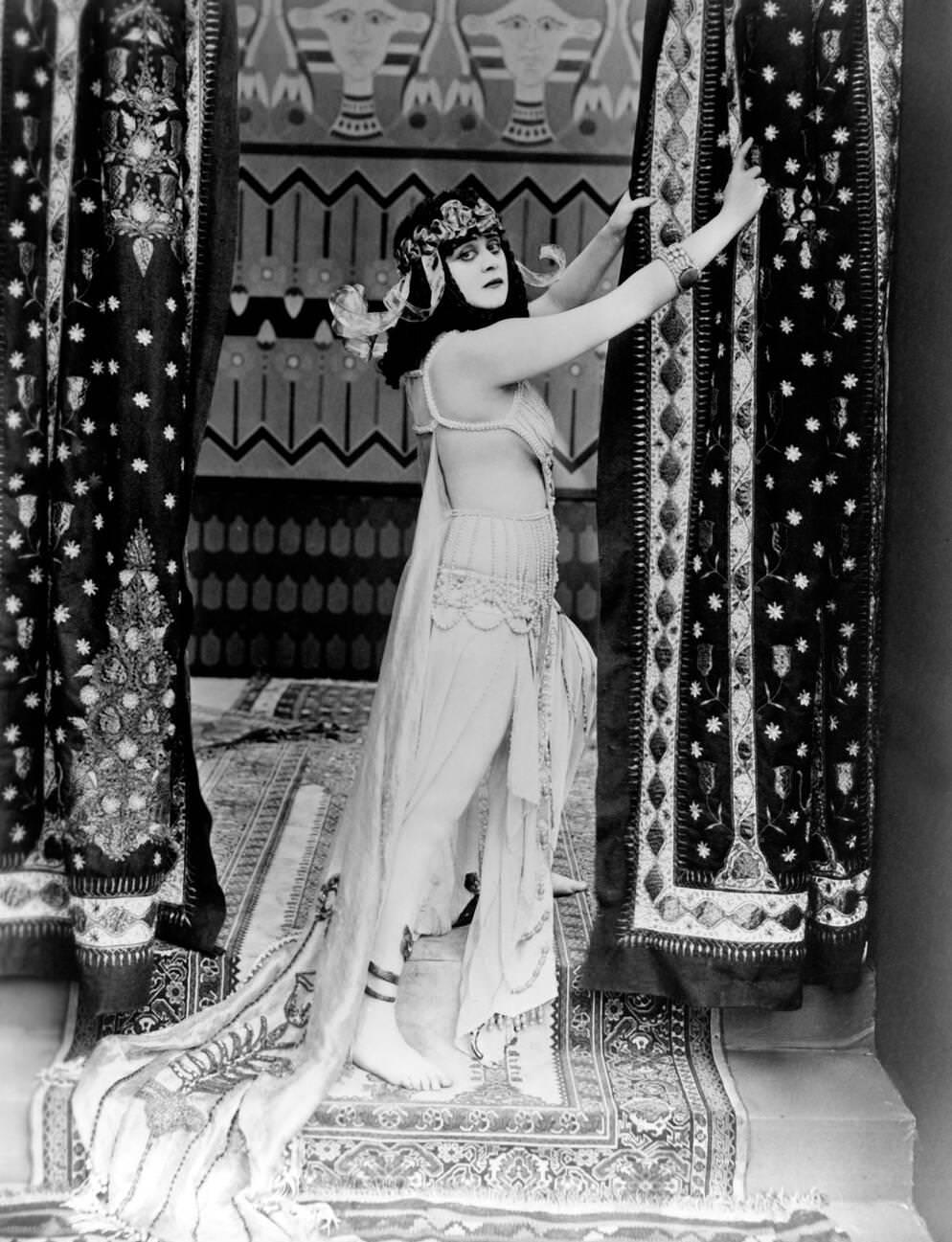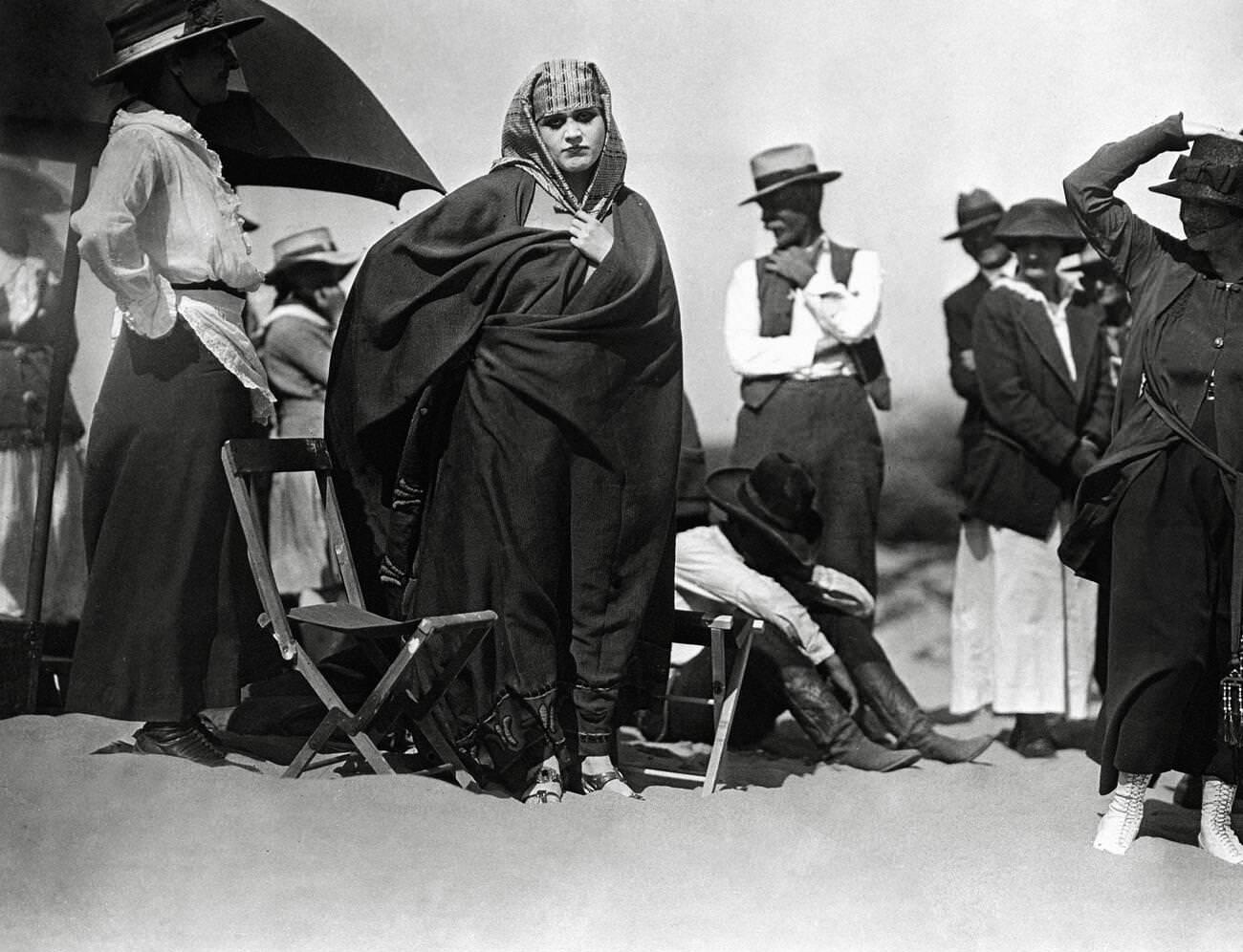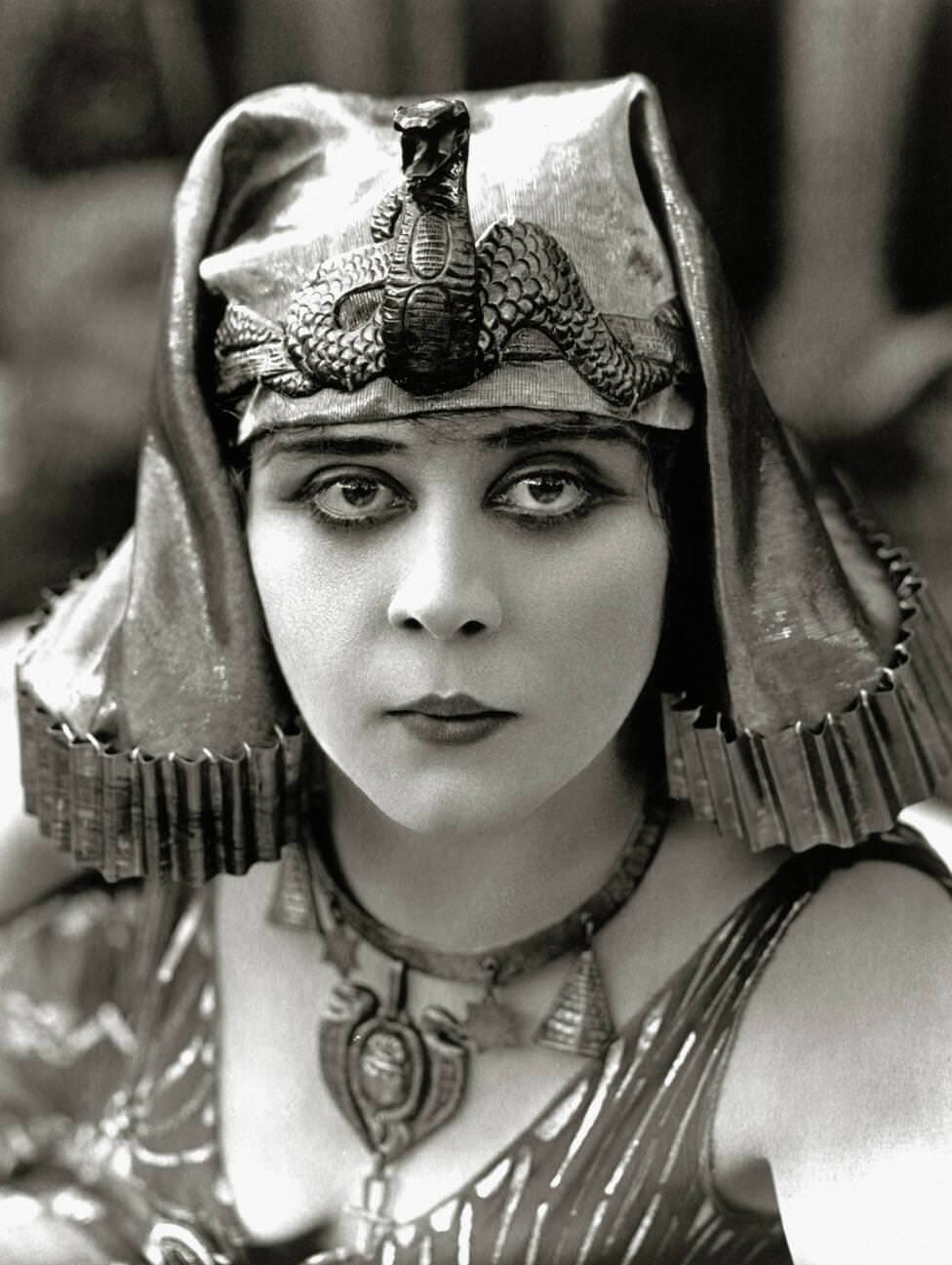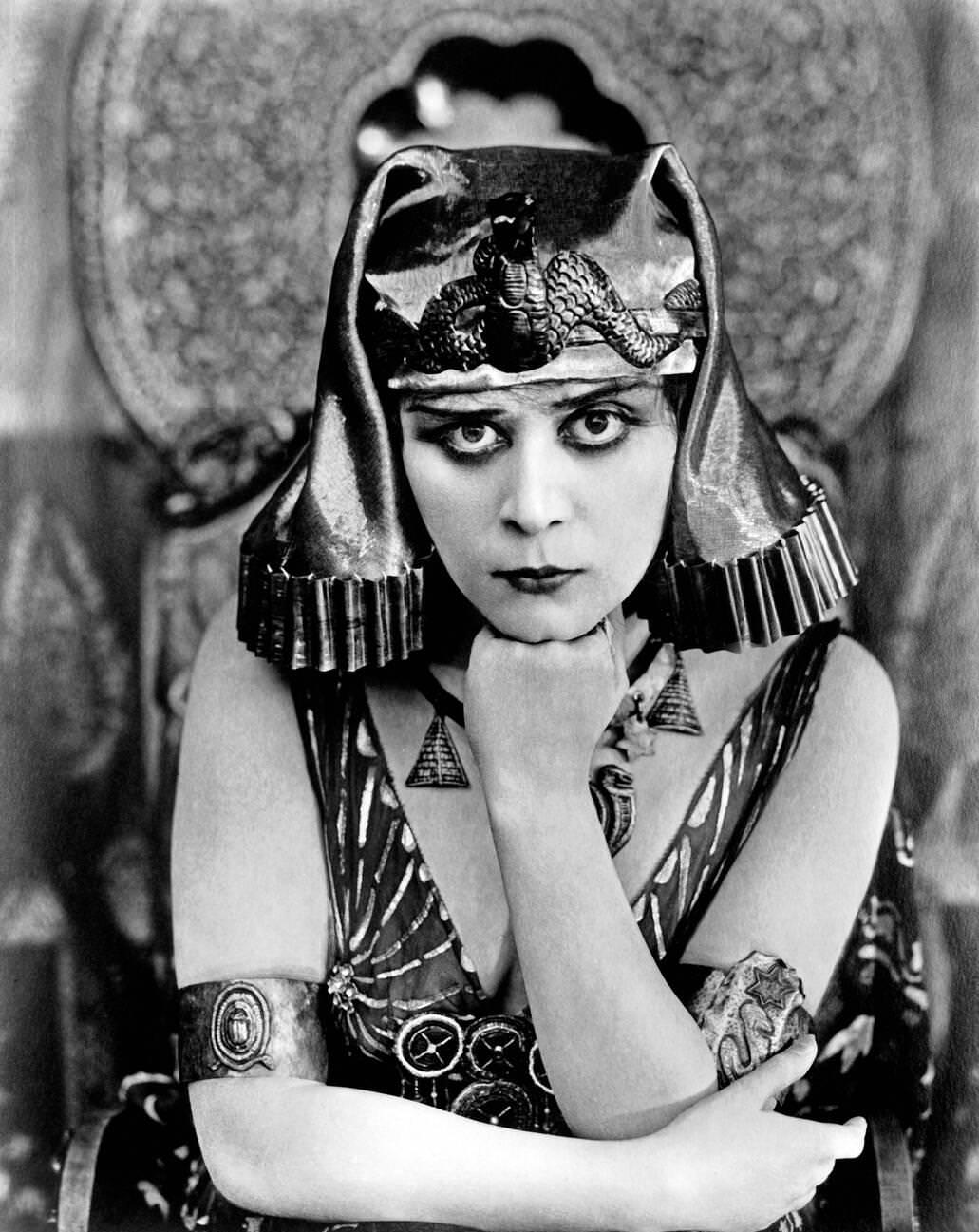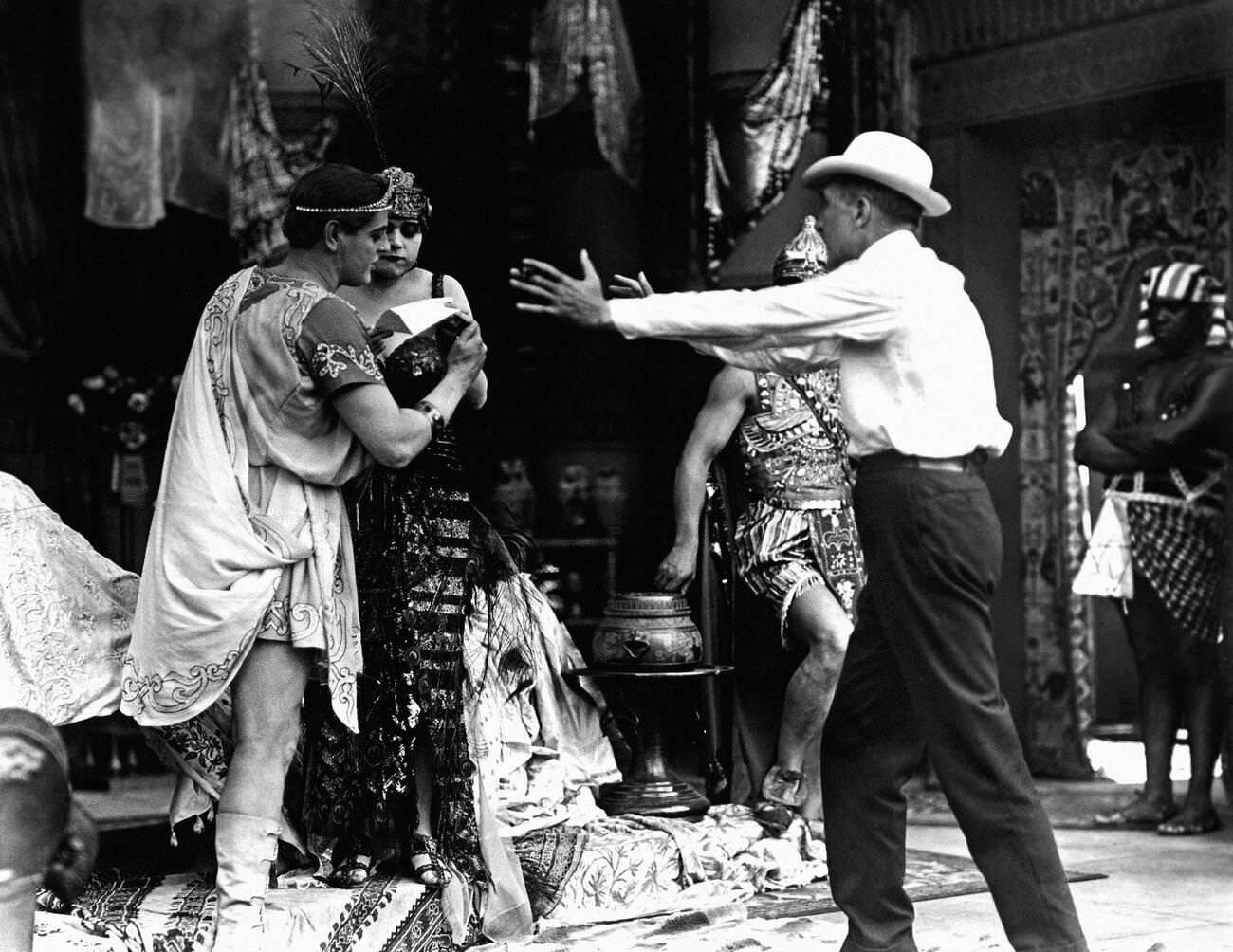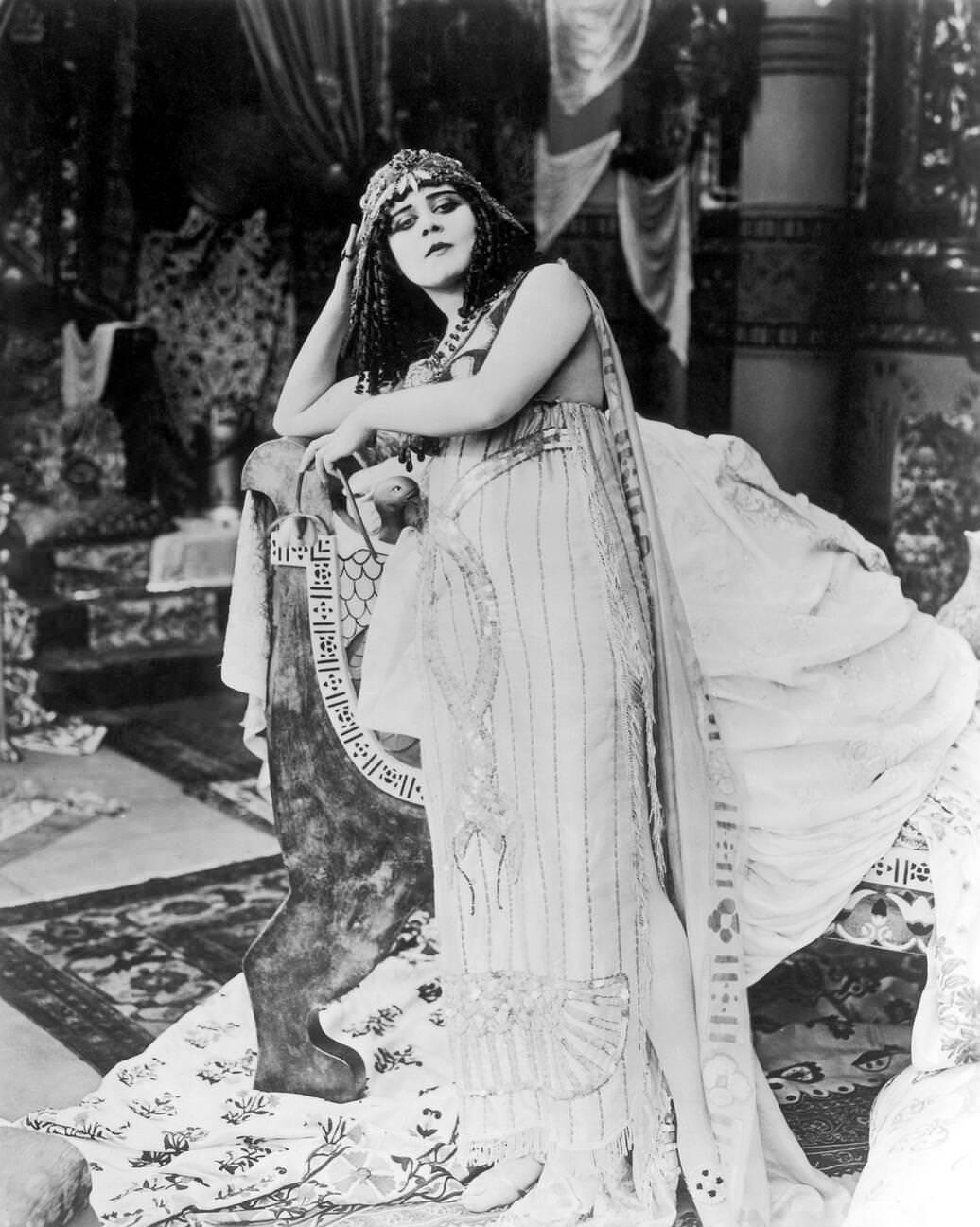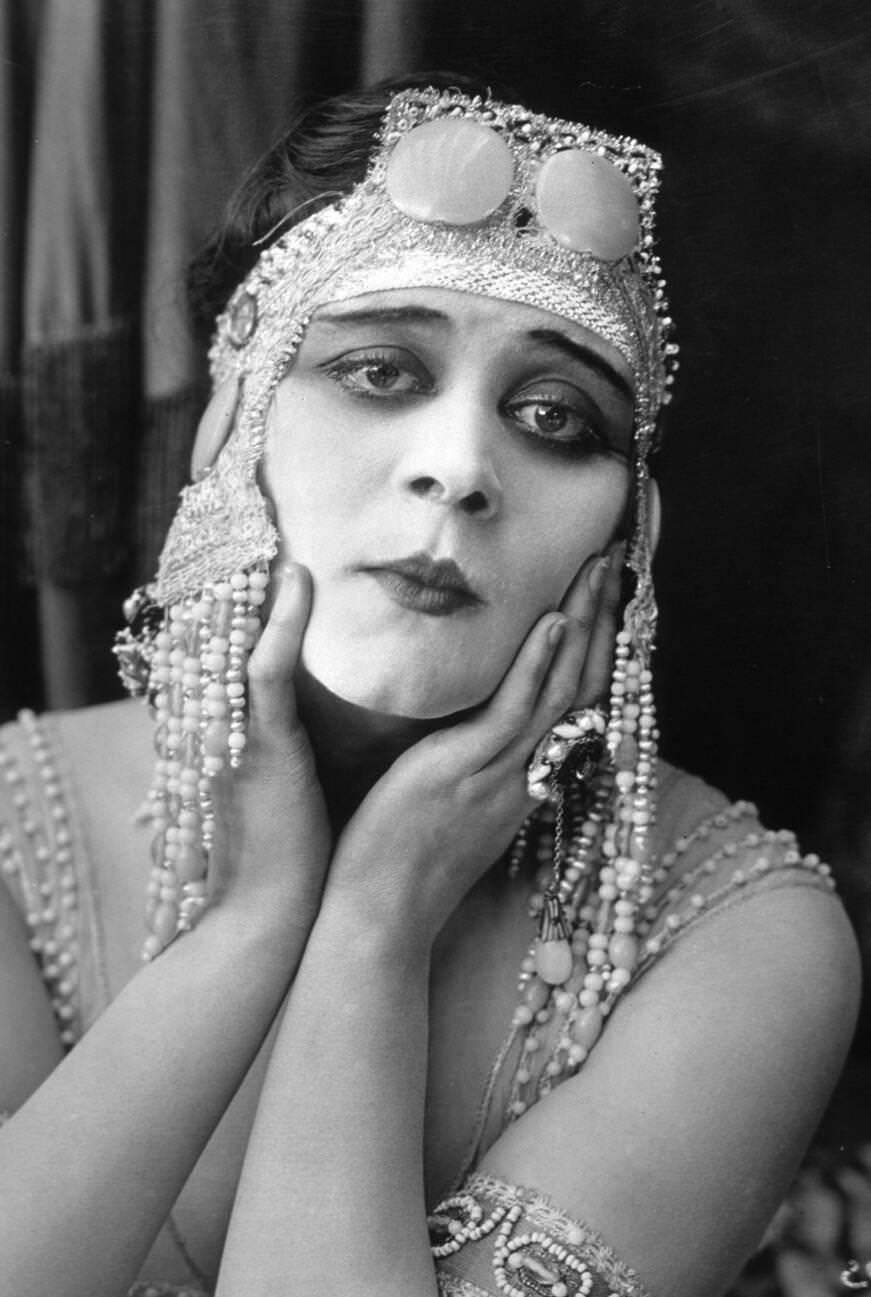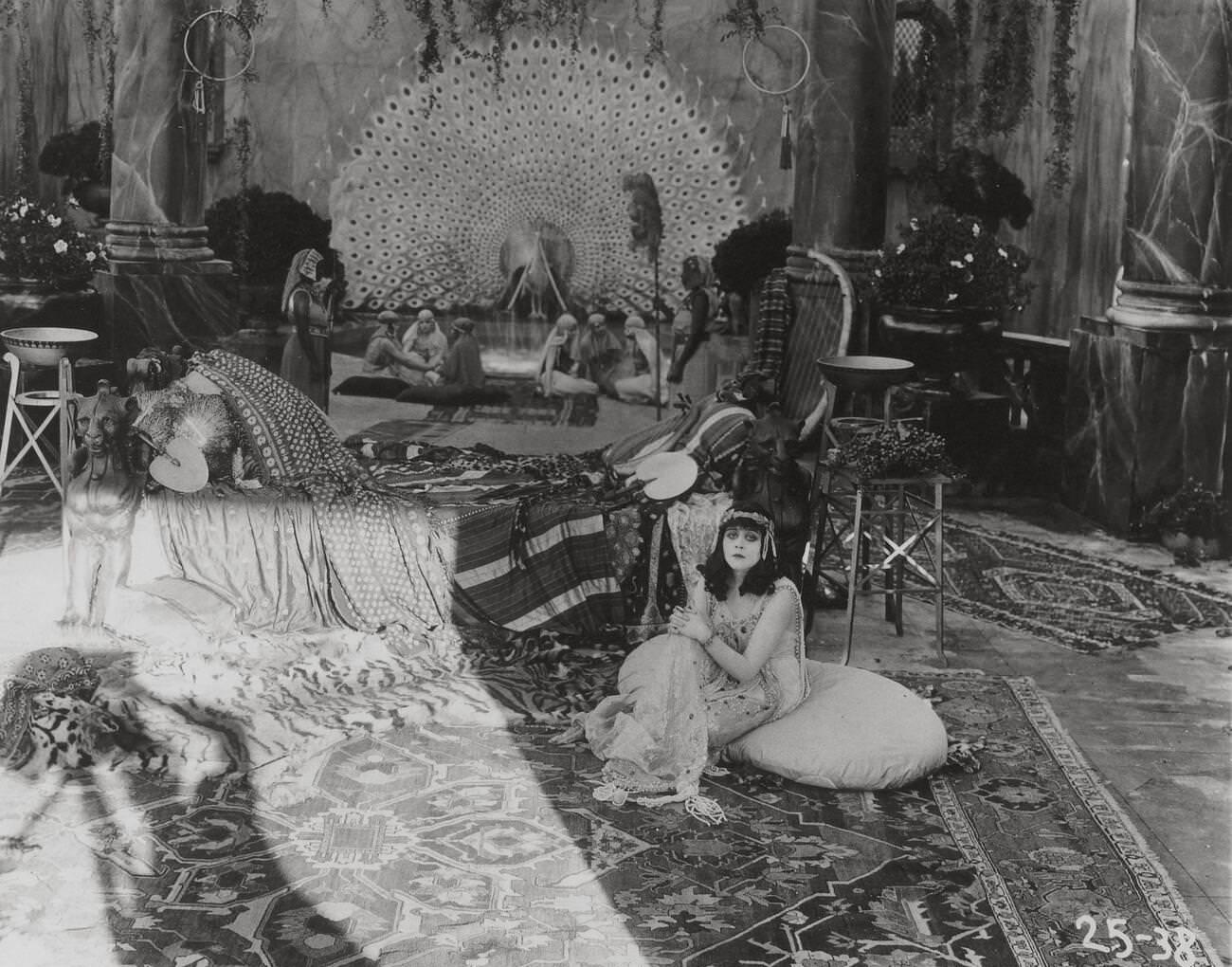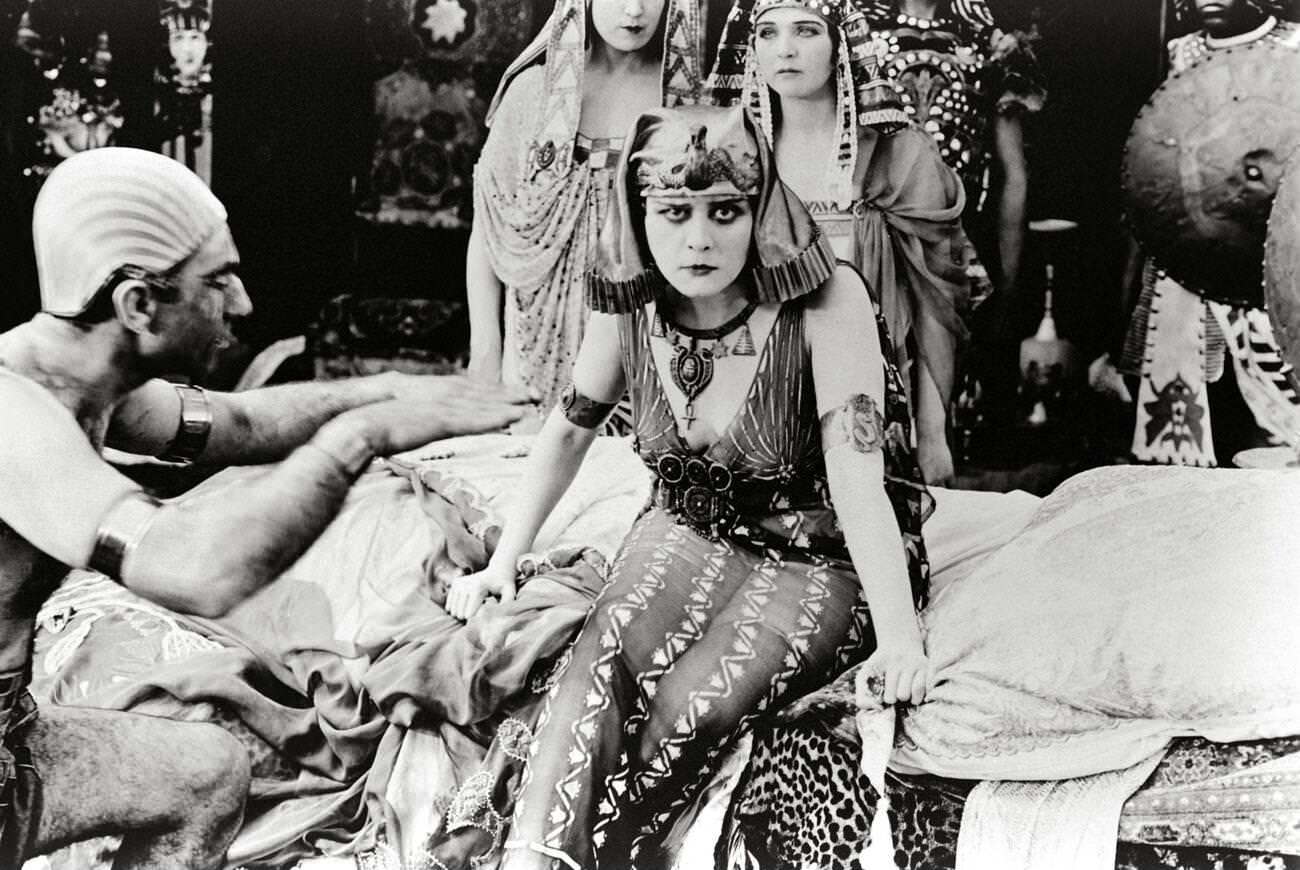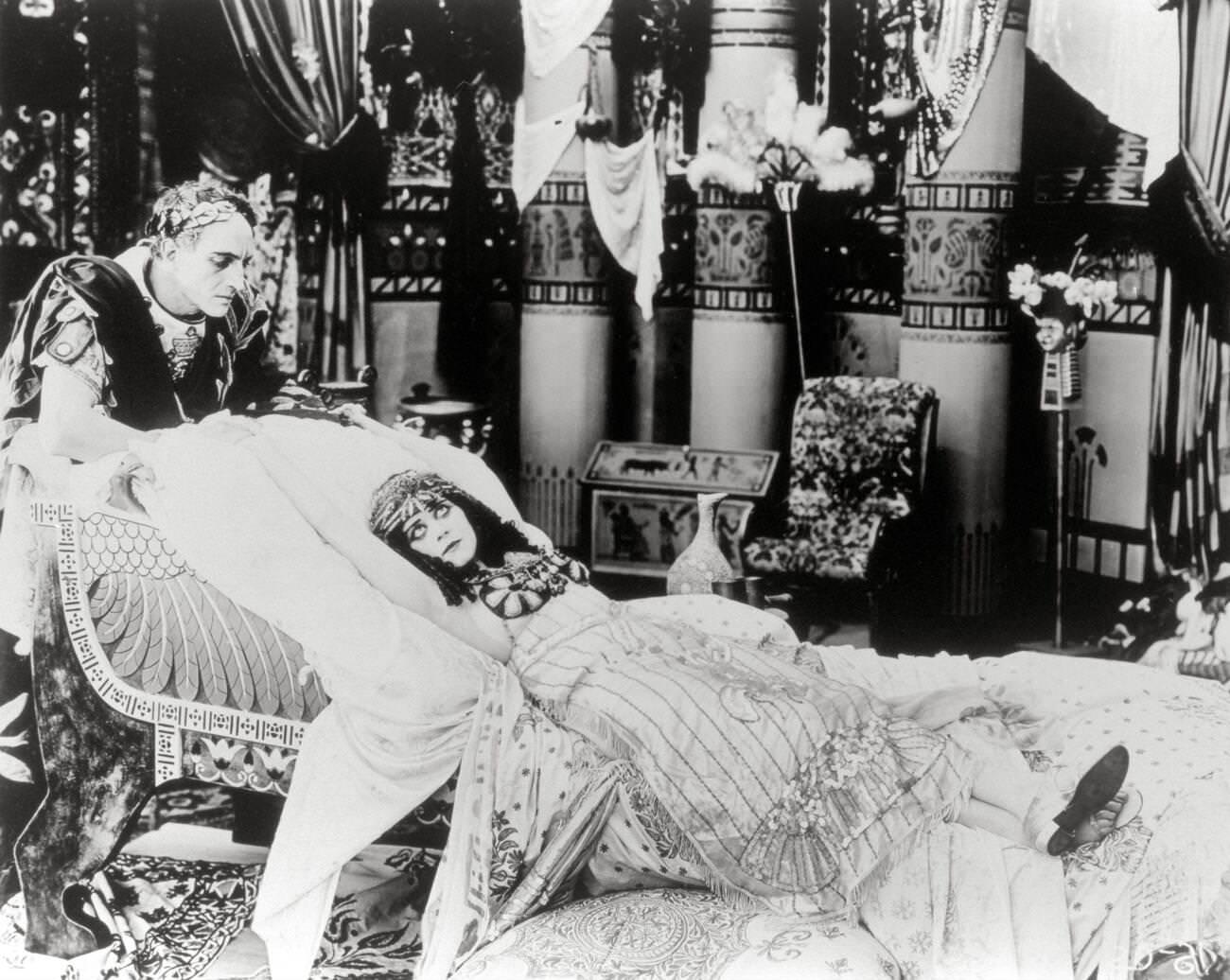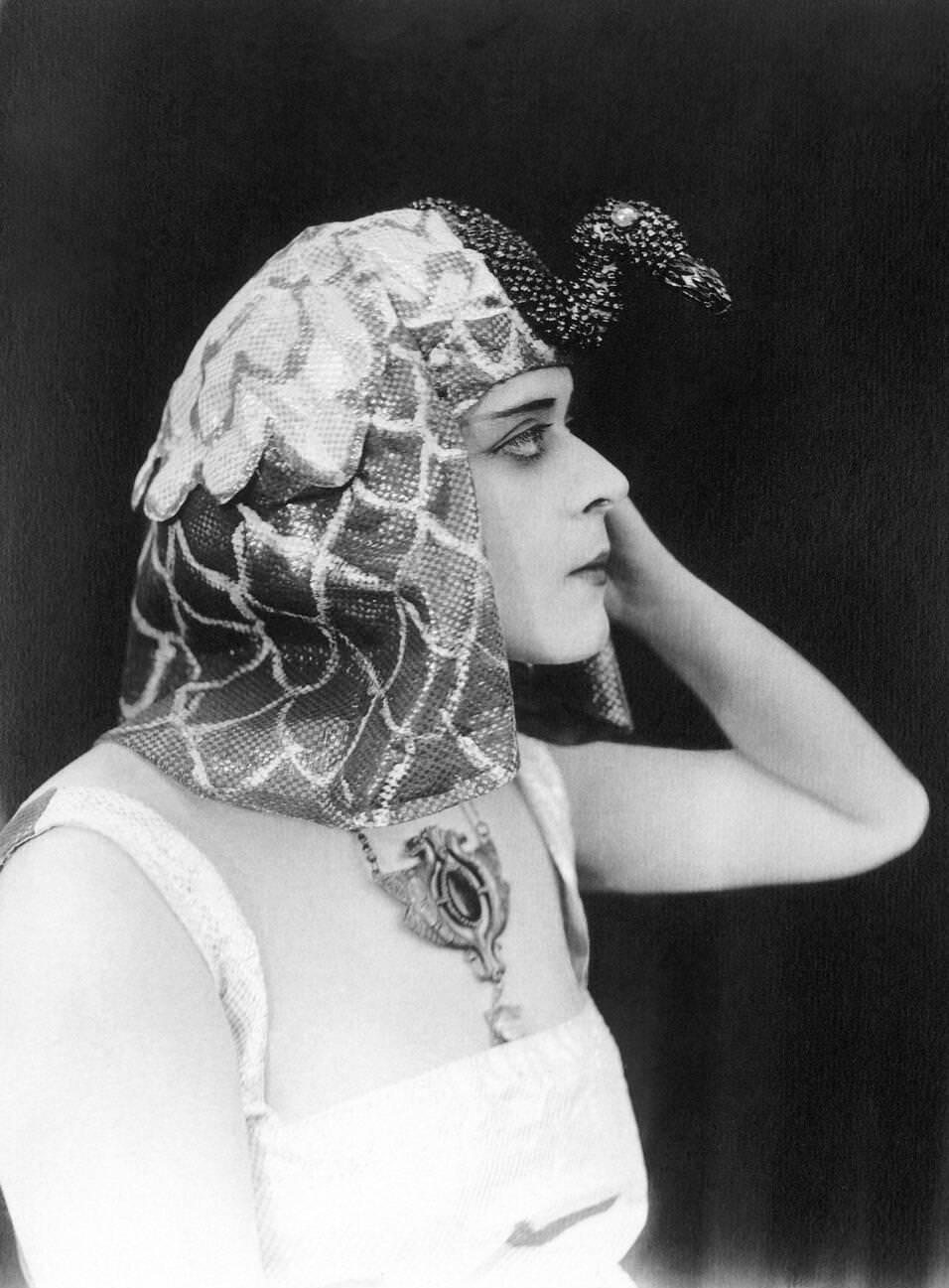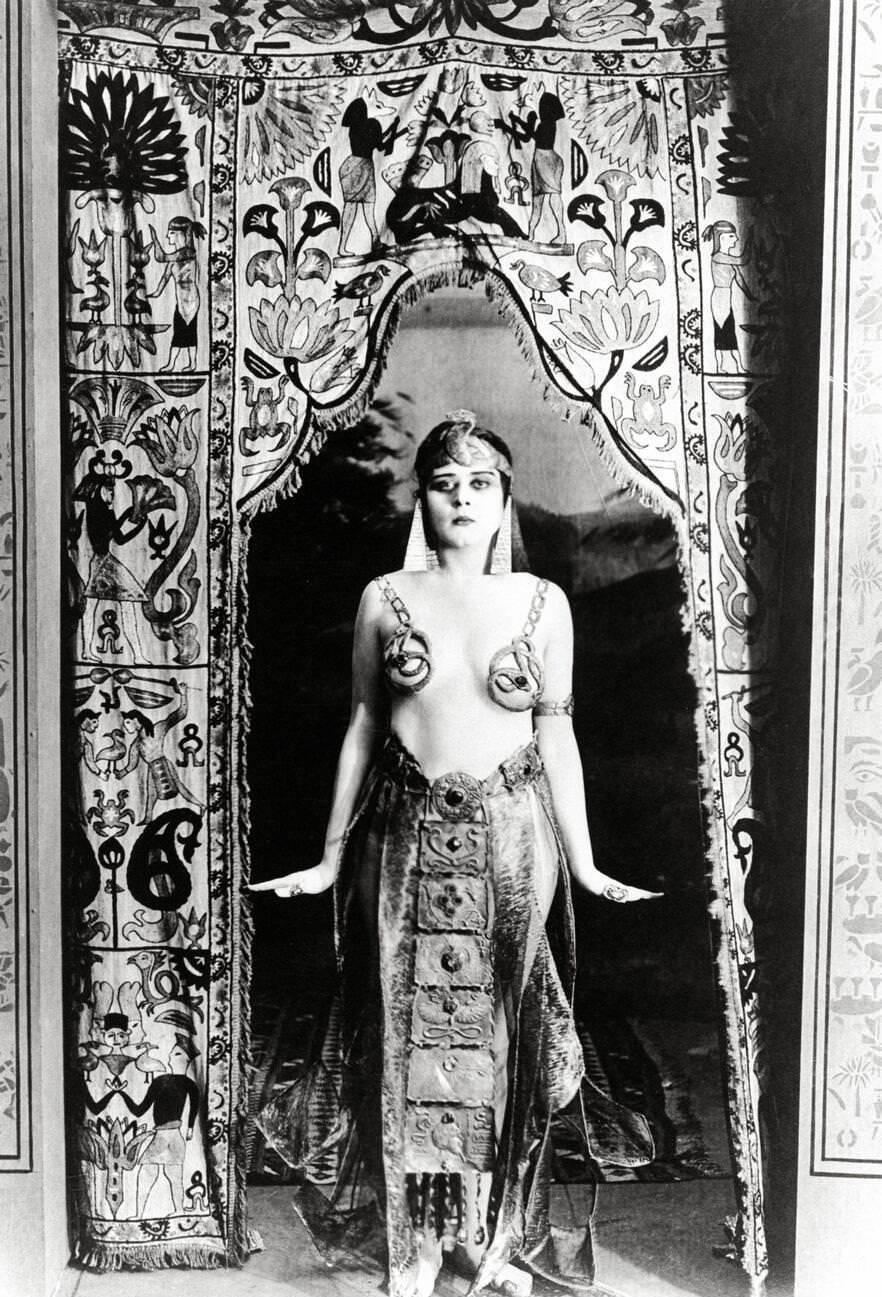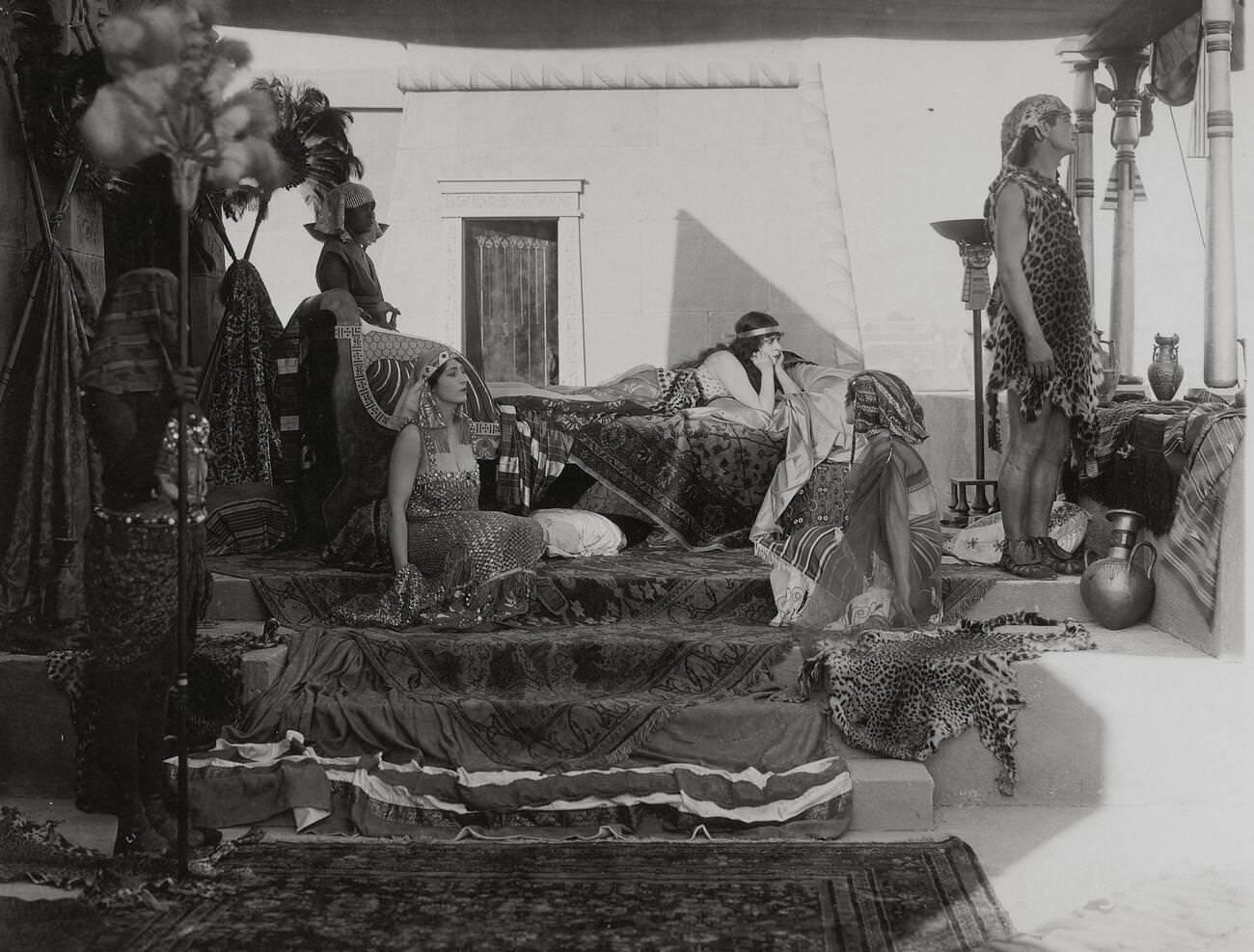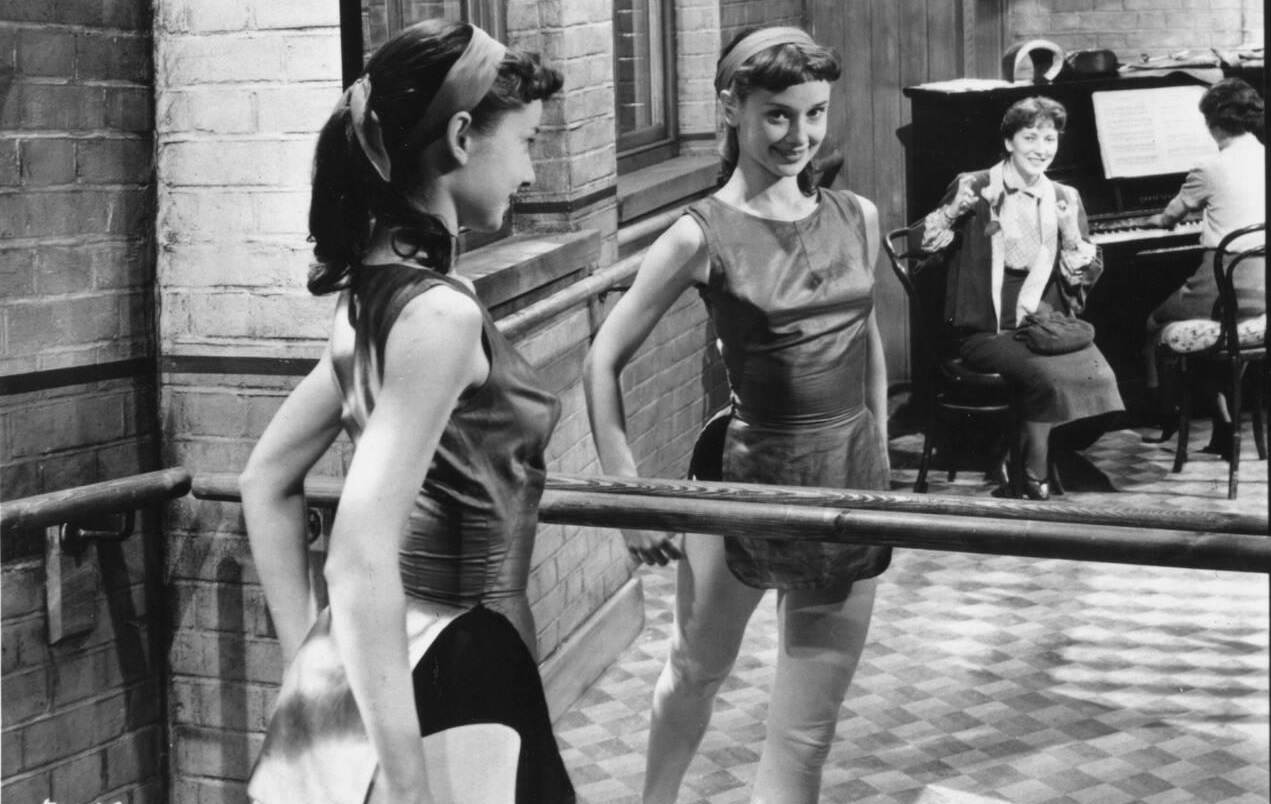In the history of early cinema, few films capture the ambition and grandeur of the silent film era quite like the 1917 production of “Cleopatra.” Directed by J. Gordon Edwards and starring the enigmatic Theda Bara in the titular role, this film attempted to bring the lavishness and complexity of ancient Egypt to life on the silver screen.
The Story Brought to Life
The film’s narrative aimed to encompass the breadth of Cleopatra VII’s life, focusing on her relationships with Julius Caesar and Marc Antony. Its portrayal of Cleopatra was that of a powerful, seductive queen, using her intelligence and charm to navigate the treacherous waters of Roman politics. The film dramatized key moments in Cleopatra’s life, from her alliance with Julius Caesar to her tragic love affair with Marc Antony, culminating in their ultimate demise.
The Cast
Theda Bara, one of the era’s most prominent actresses and a symbol of the “vamp” archetype, was cast in the role of Cleopatra. Bara’s portrayal was both commanding and sensuous, embodying the public’s imagination of the Egyptian queen with an air of mystique and allure. The cast also included Fritz Leiber Sr. as Julius Caesar and Thurston Hall as Marc Antony.
Production
The production aimed to recreate the opulence of ancient Egypt, with no expense spared on costumes, sets, and props. The film boasted lavish set designs that included grand palaces and magnificent temples, intending to transport audiences to another time and place. The film also used thousands of extras to populate its epic scenes, adding to the spectacle.
Costumes were another highlight of the production, with Bara’s wardrobe becoming a focal point for its extravagance and historical inspiration.
The production of “Cleopatra” faced numerous challenges, from the logistical complexities of staging large-scale battle scenes to the intricacies of replicating ancient Egyptian life. Special effects, though primitive by today’s standards, were employed to enhance the film’s dramatic impact. Techniques such as double exposure and matte paintings were used to create magical and fantastical elements.
Tragically, “Cleopatra” is now considered a lost film, with the last known prints destroyed in a fire in the 1930s. Only a few still photographs and a trailer survive. And below we have compiled a list of them.




